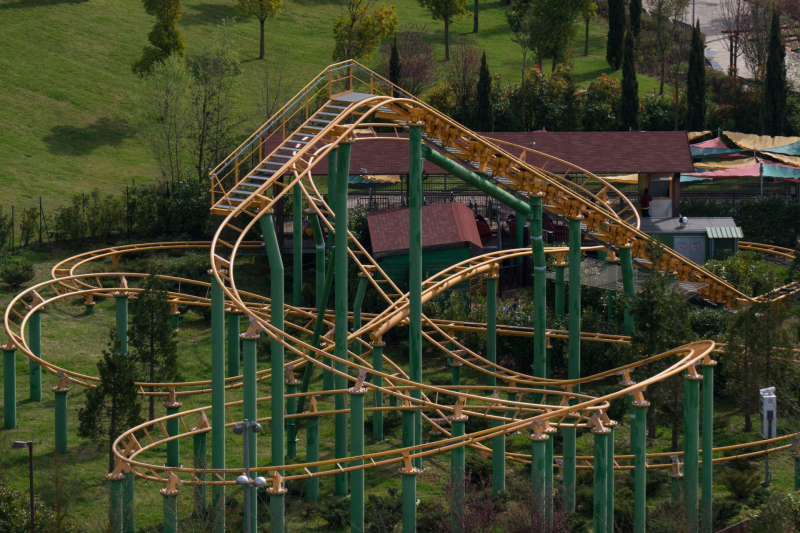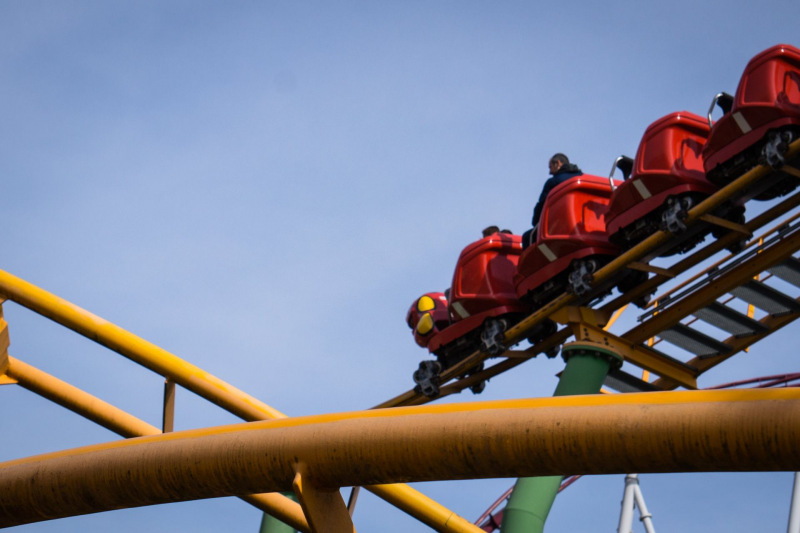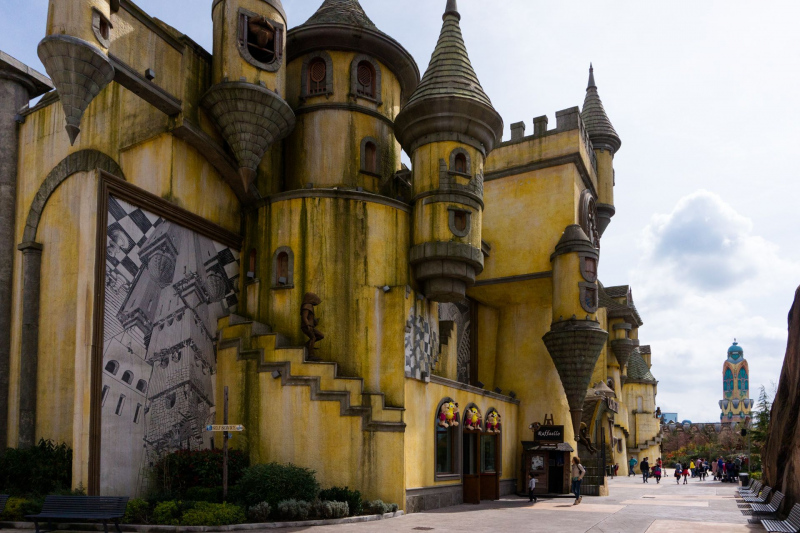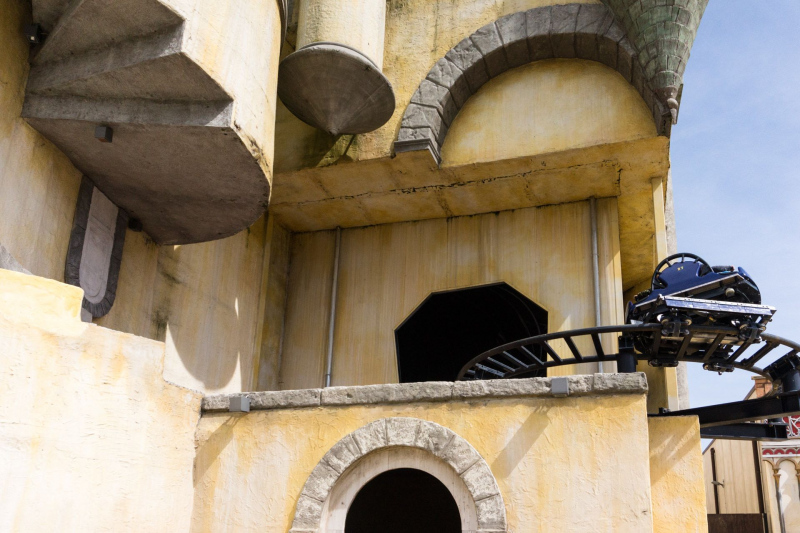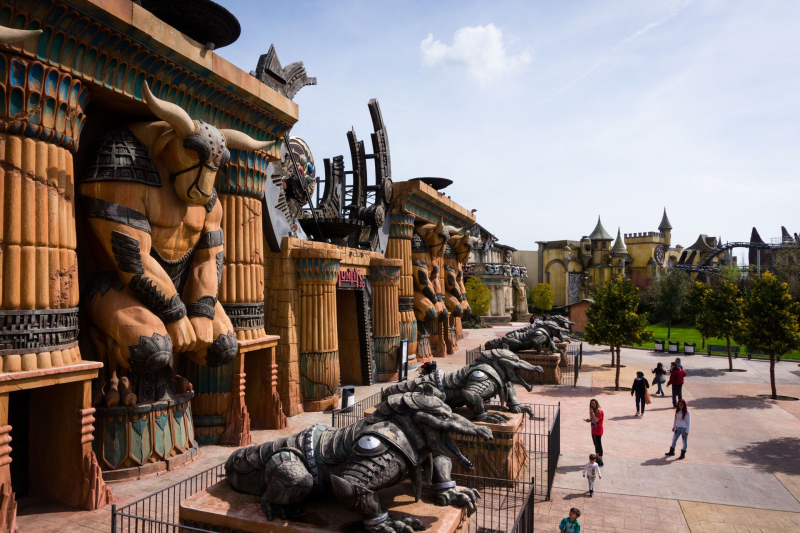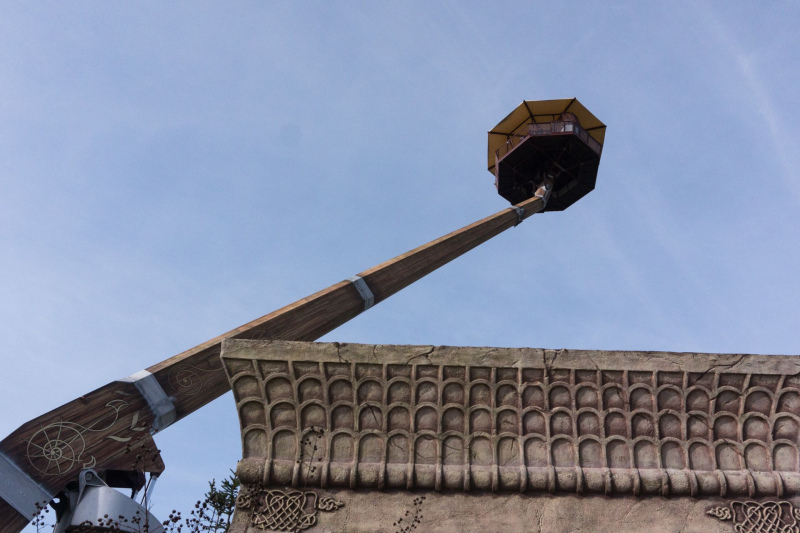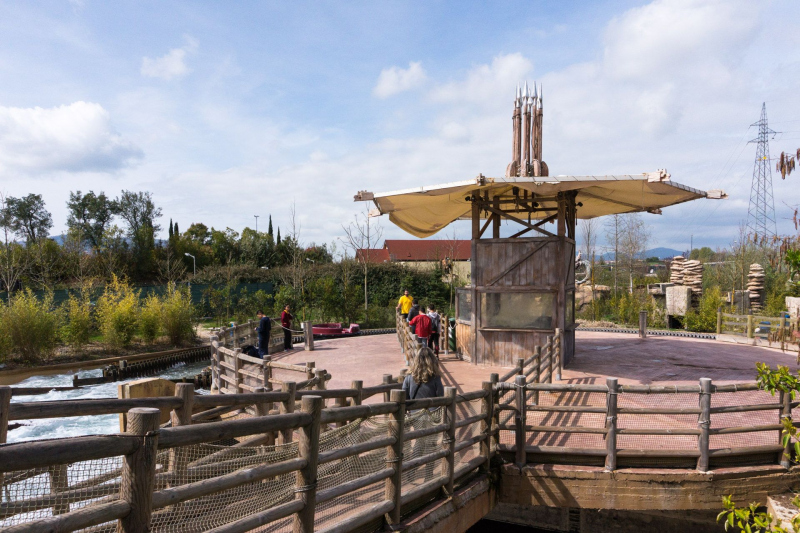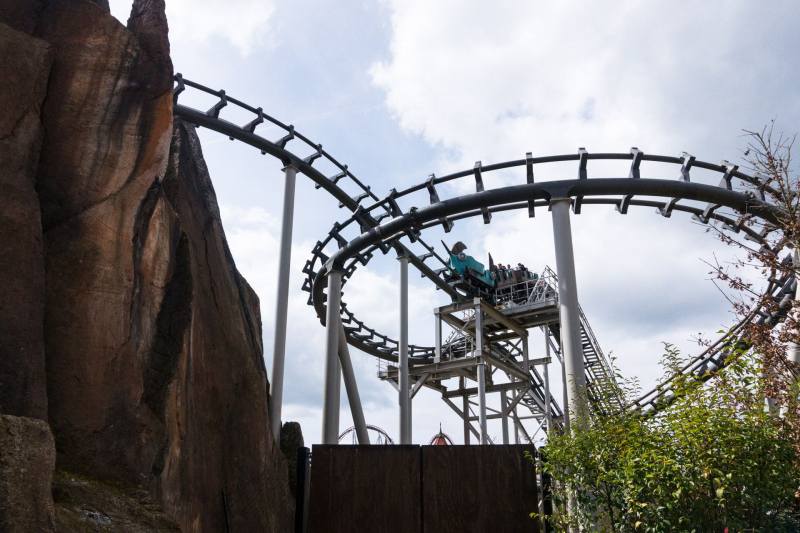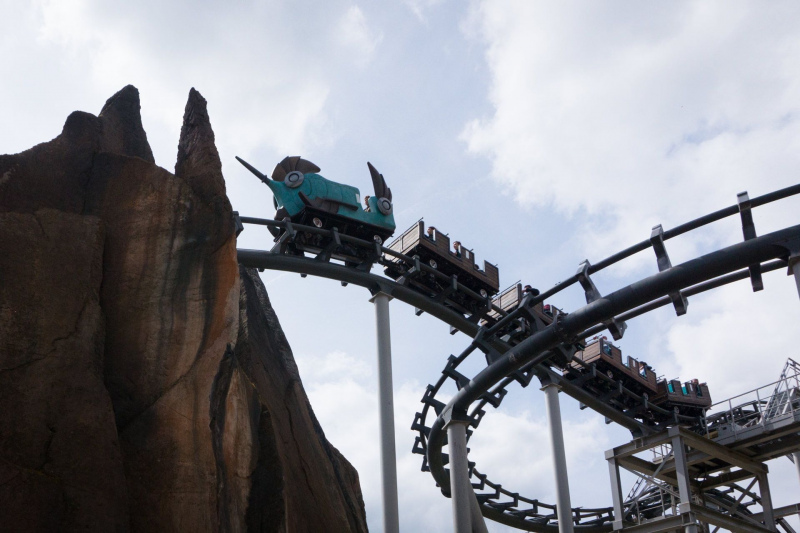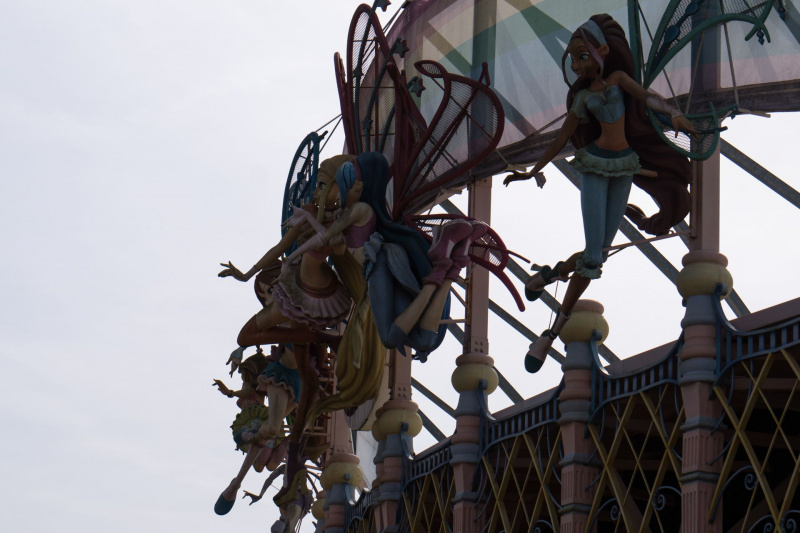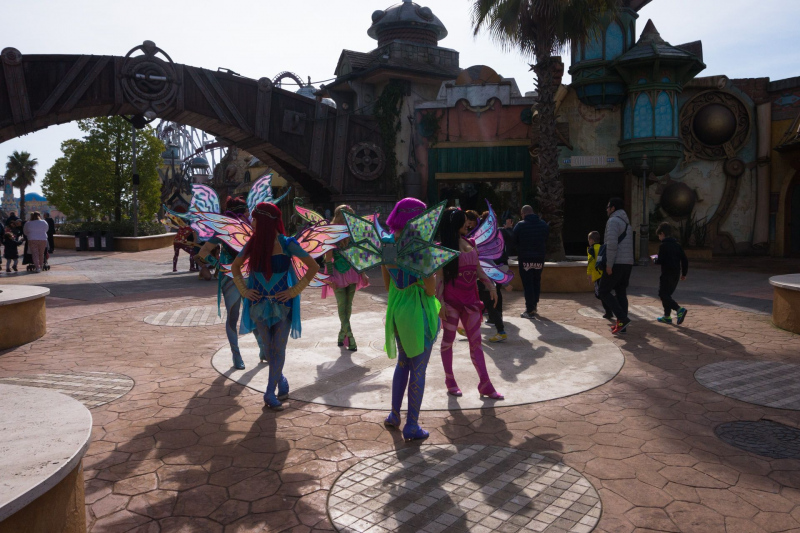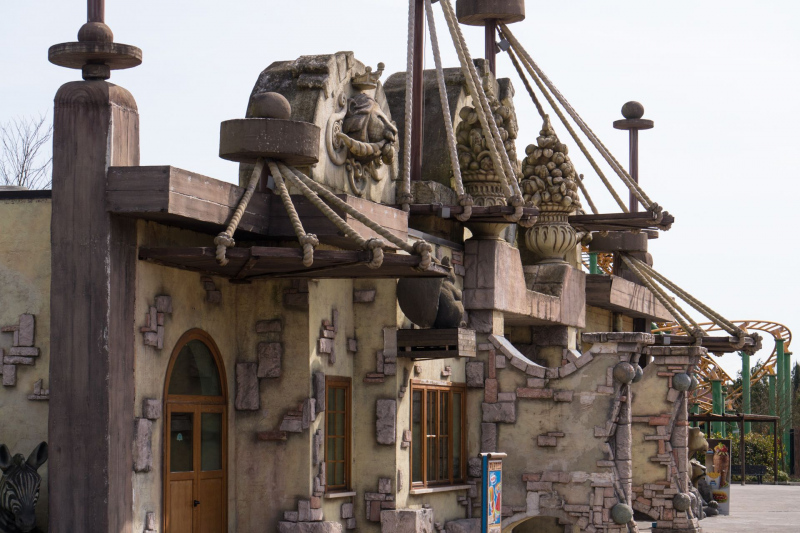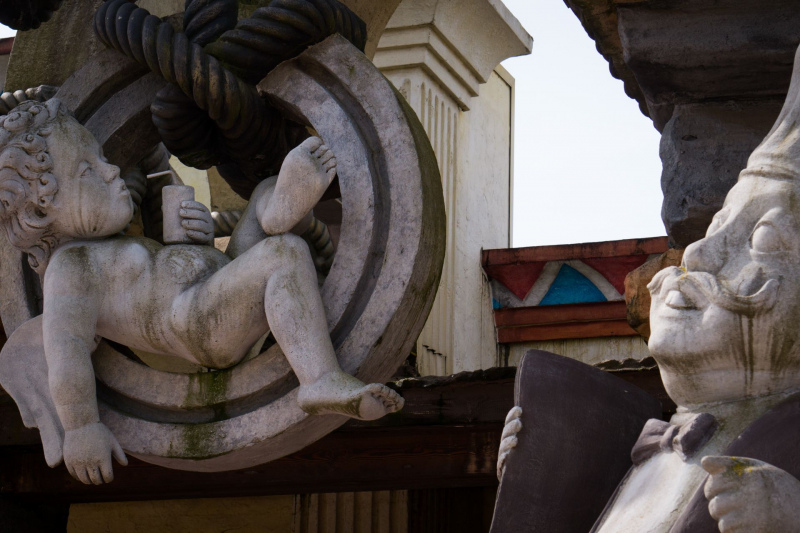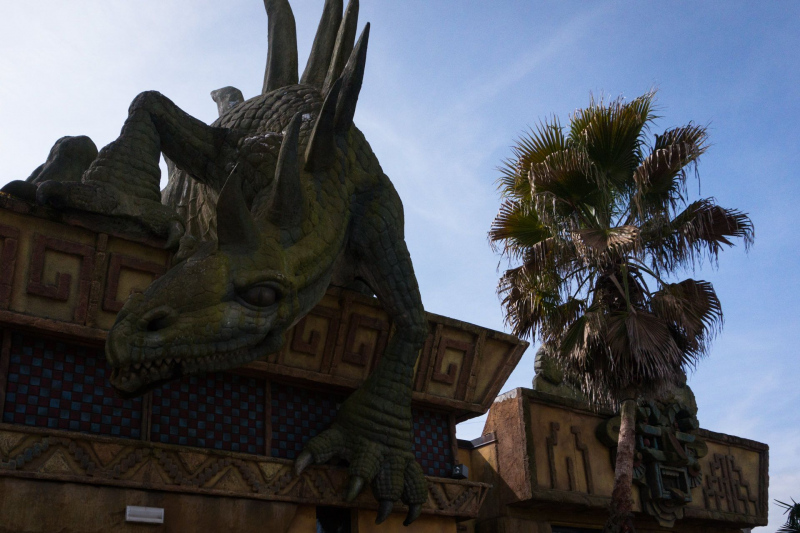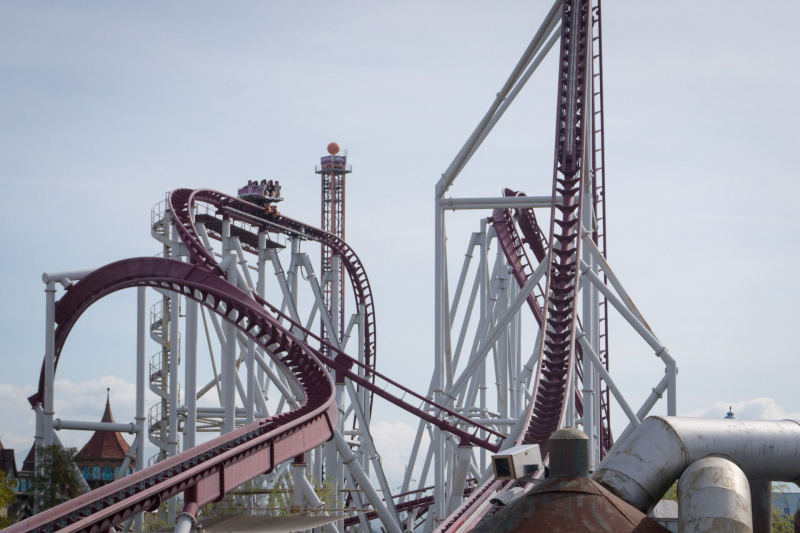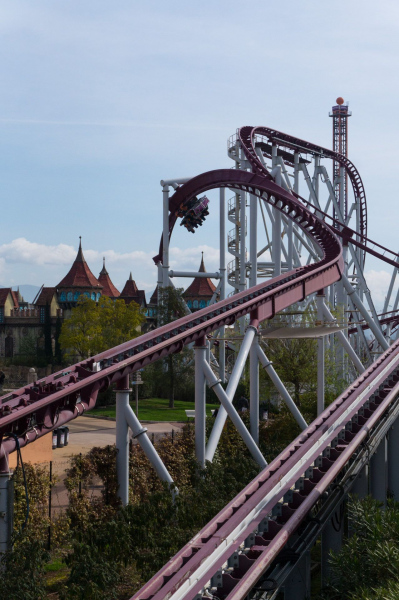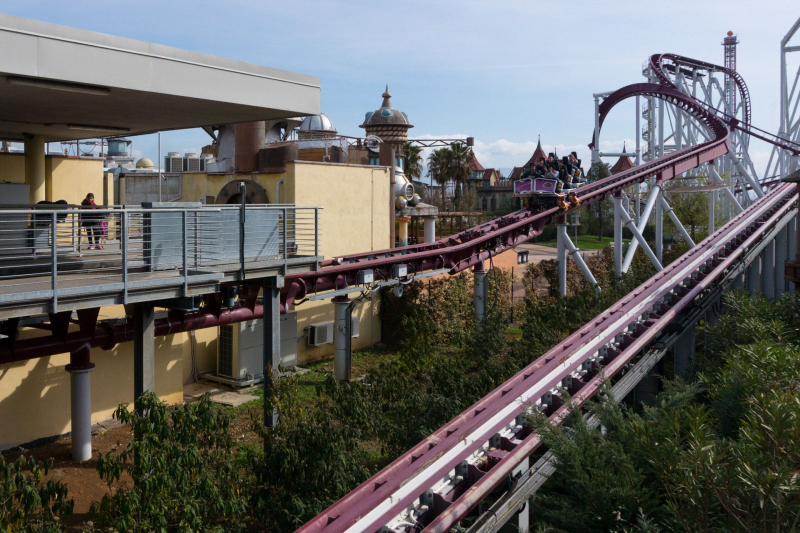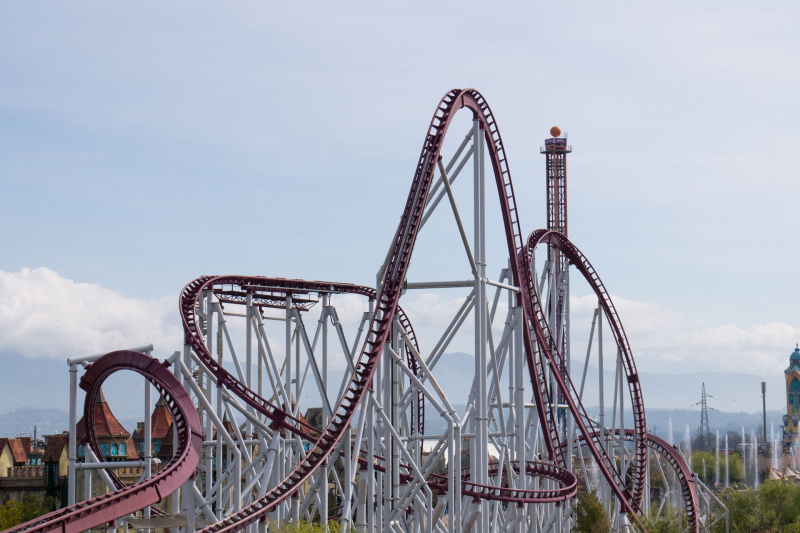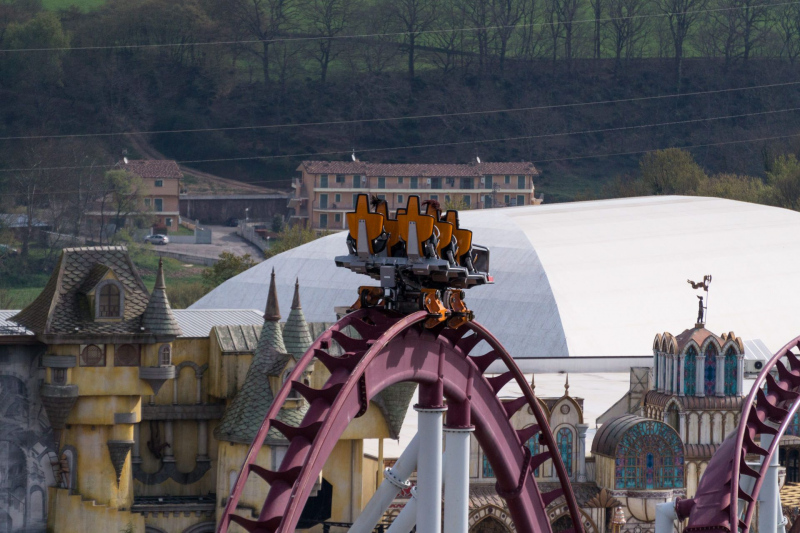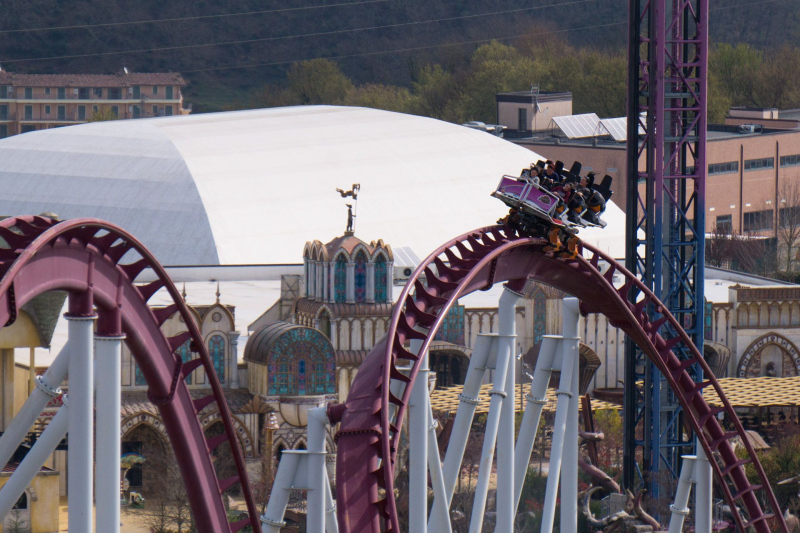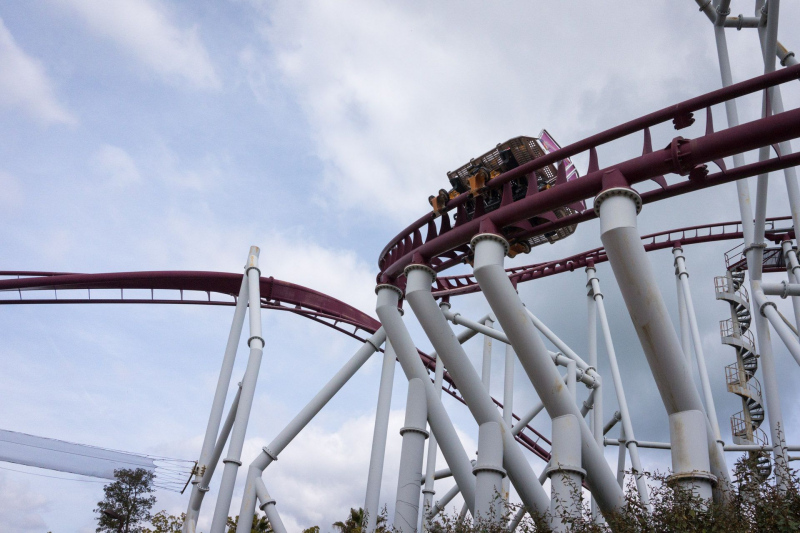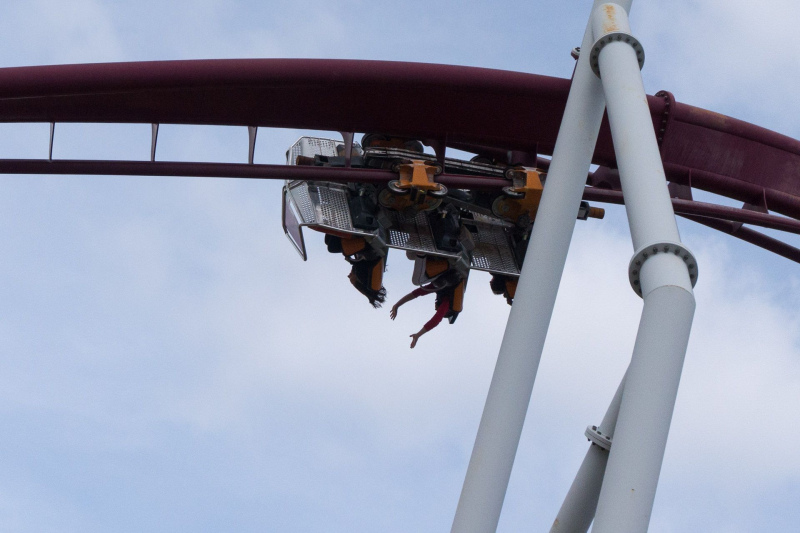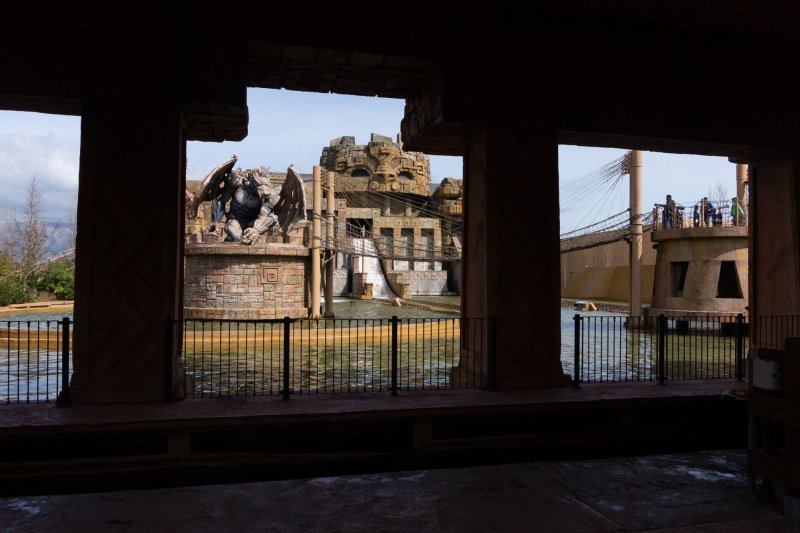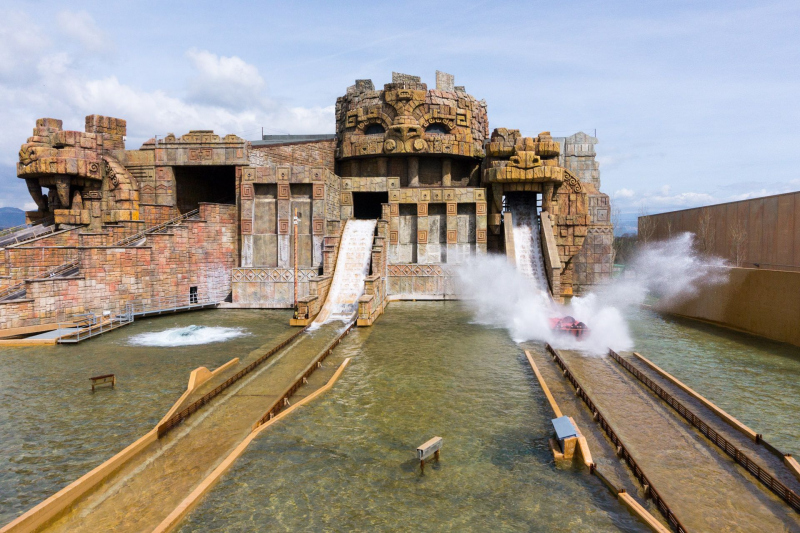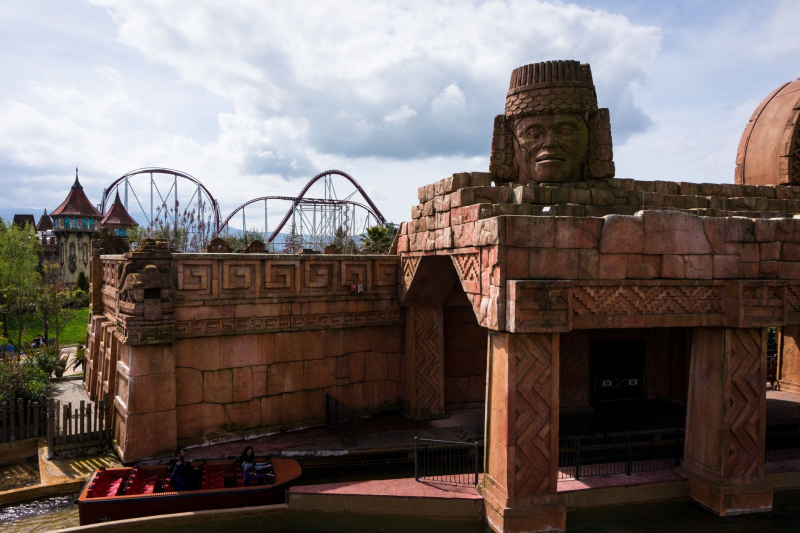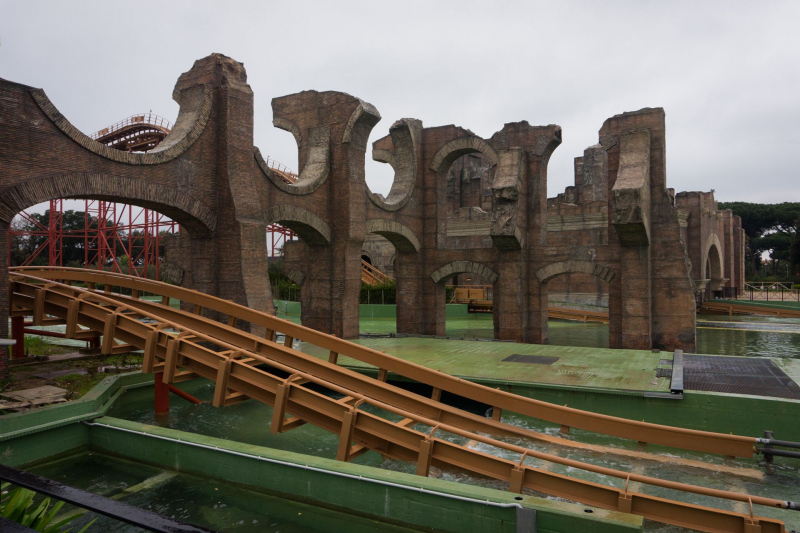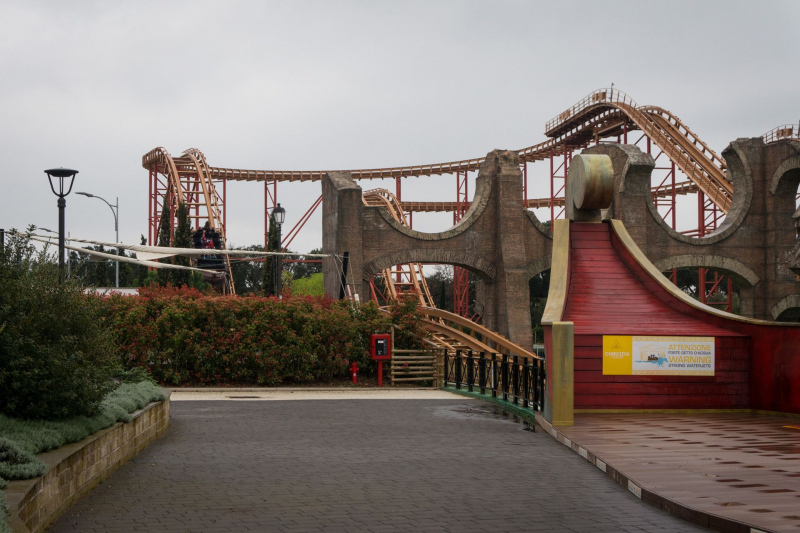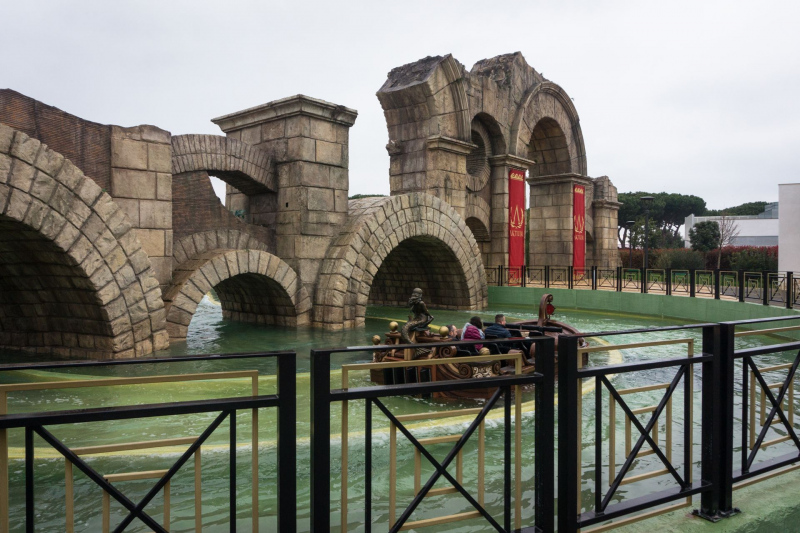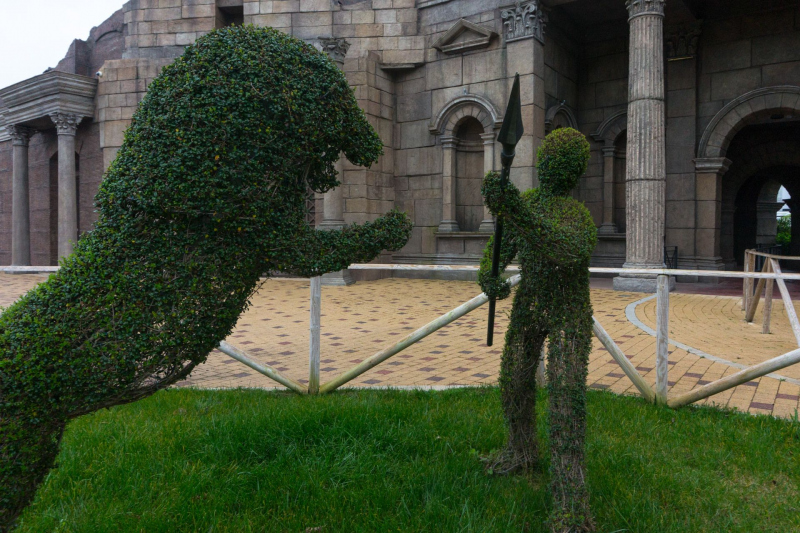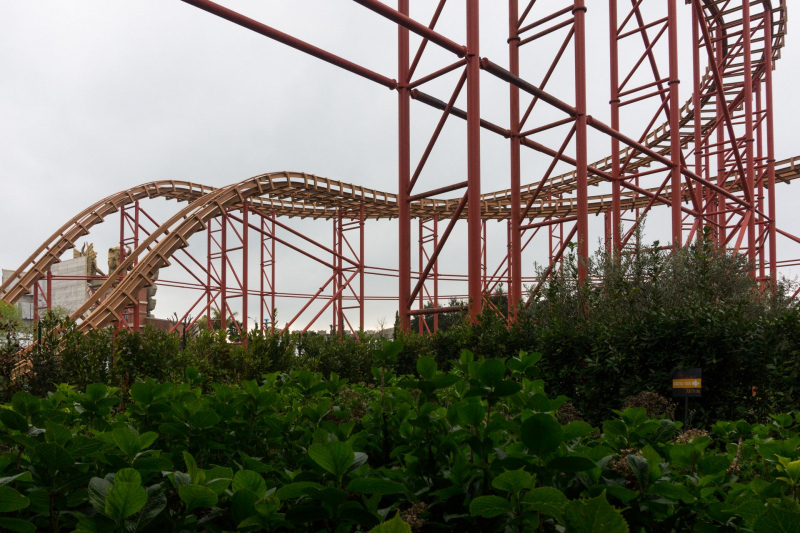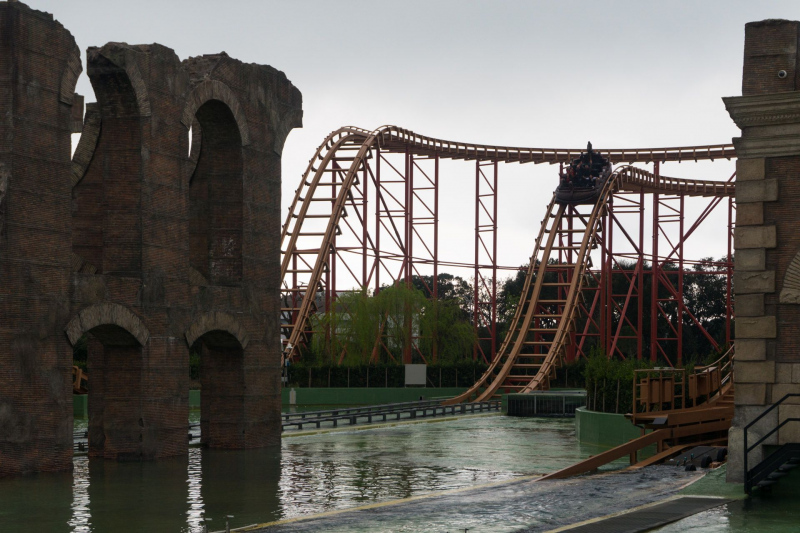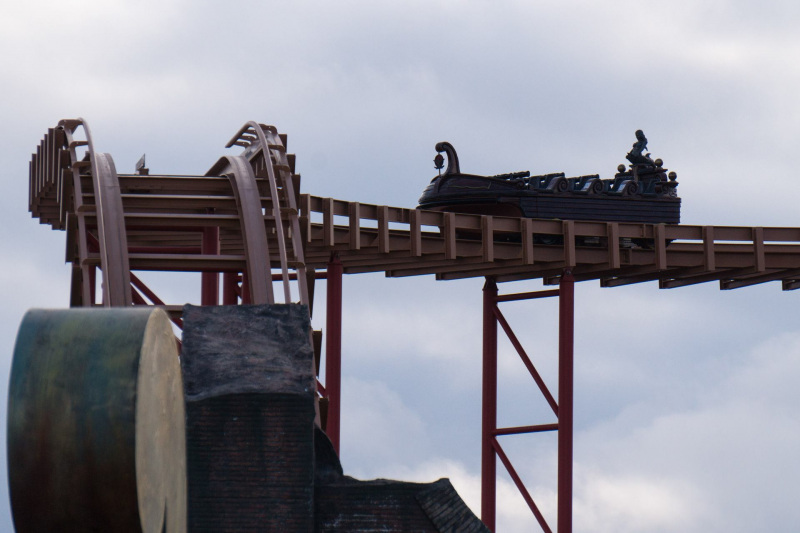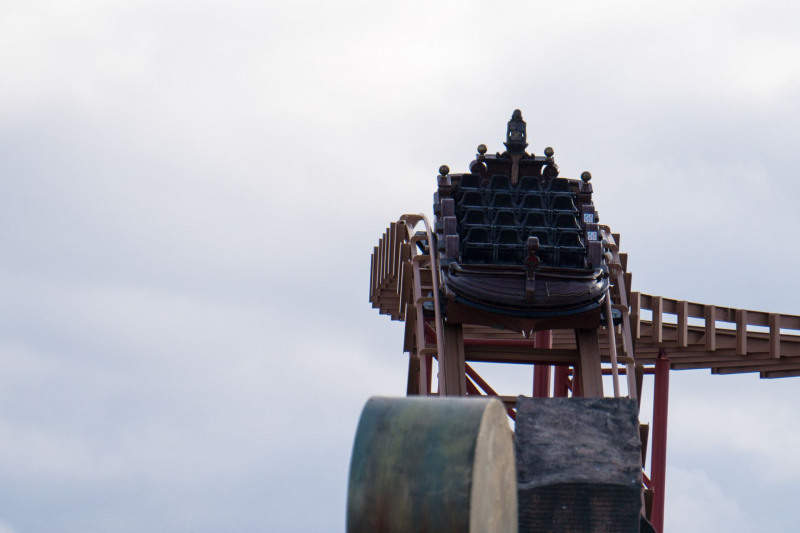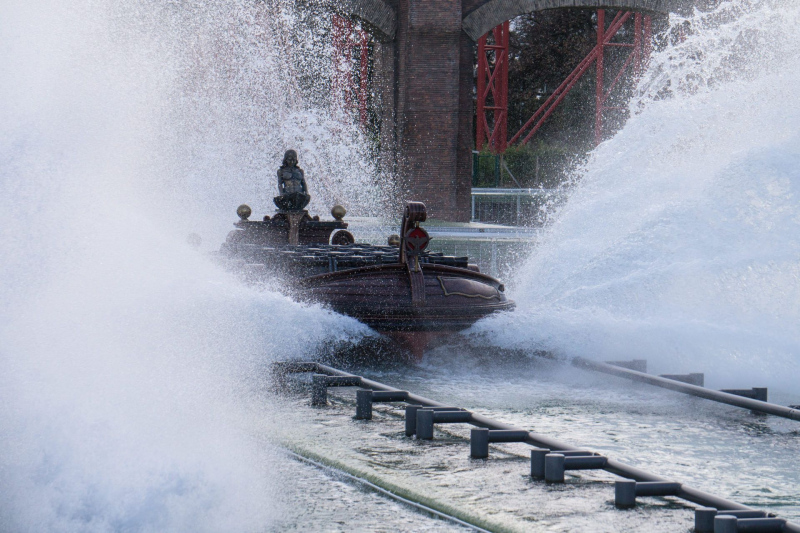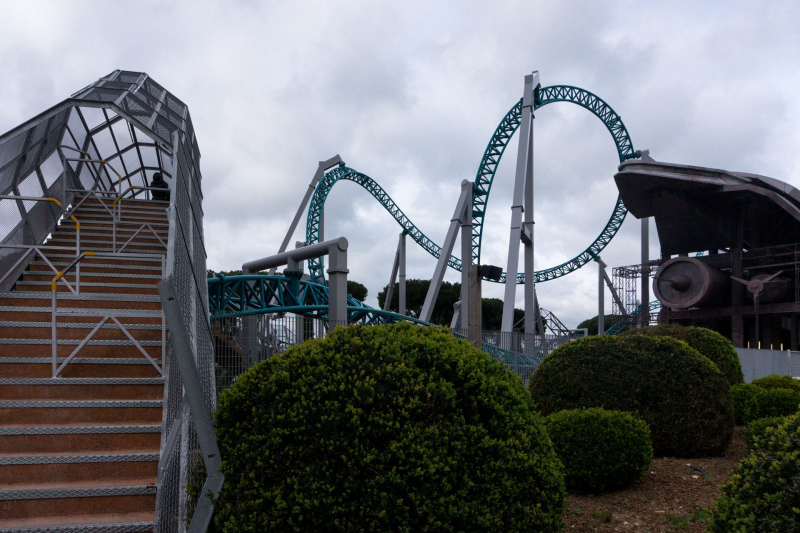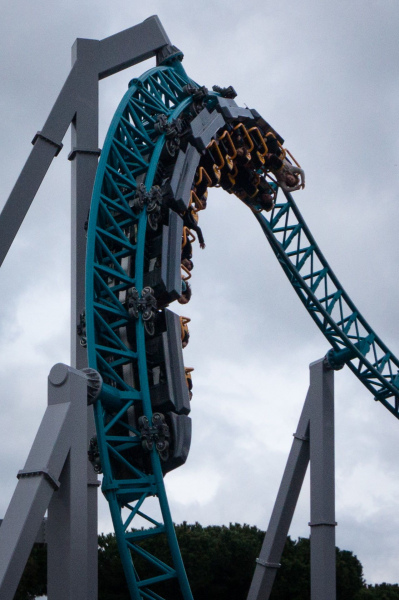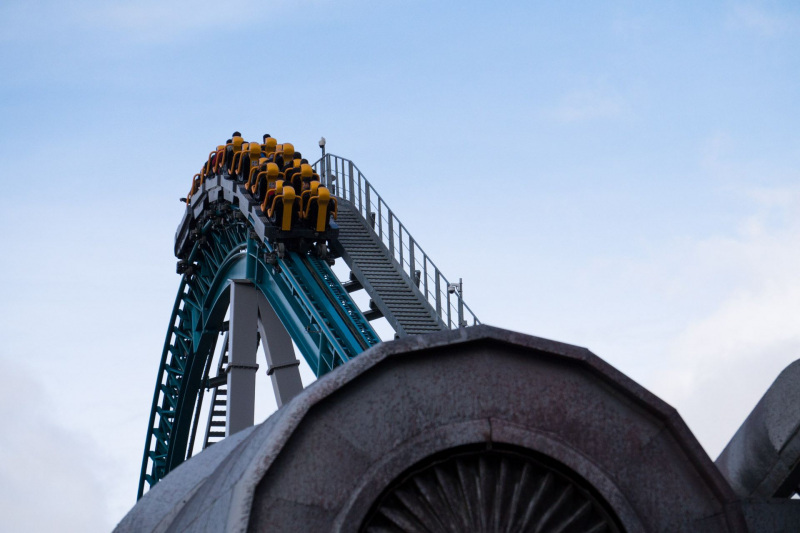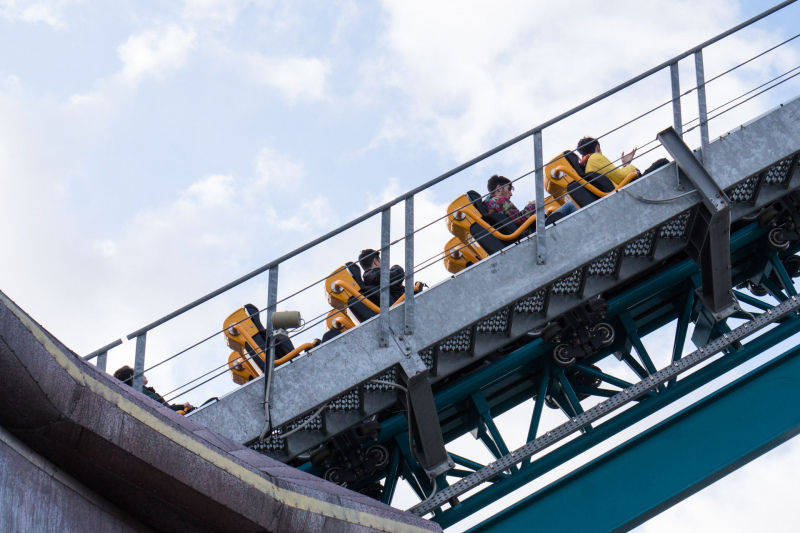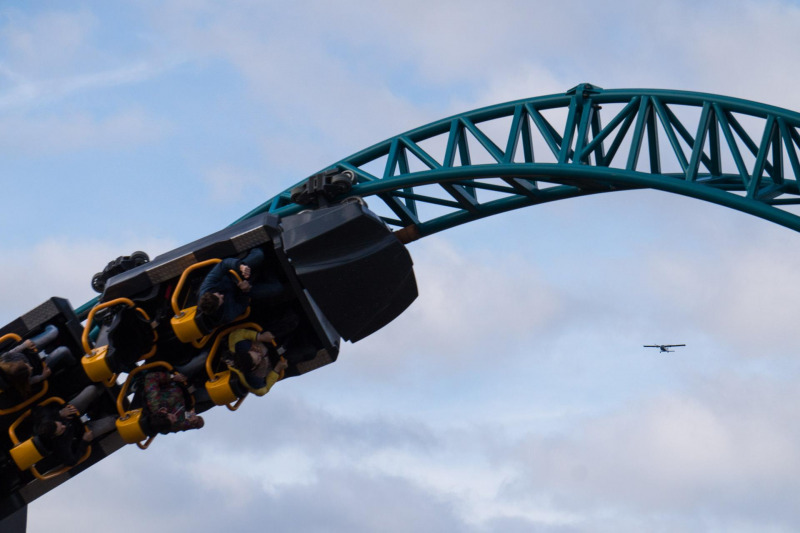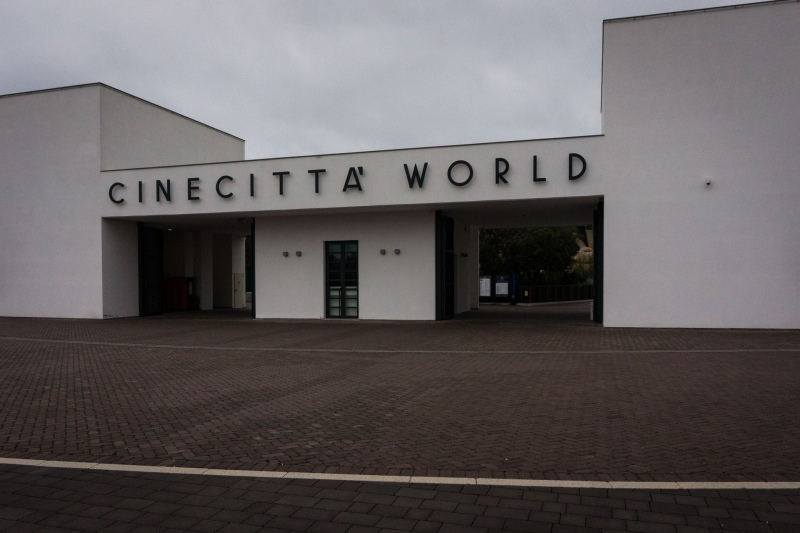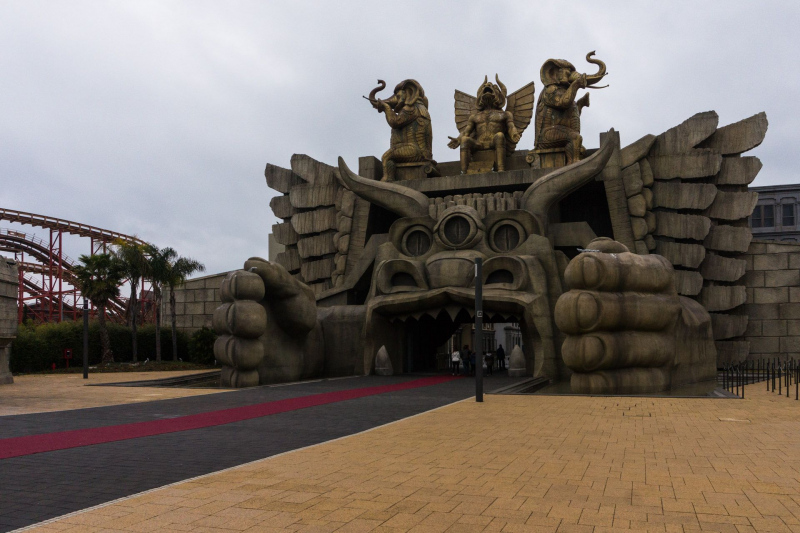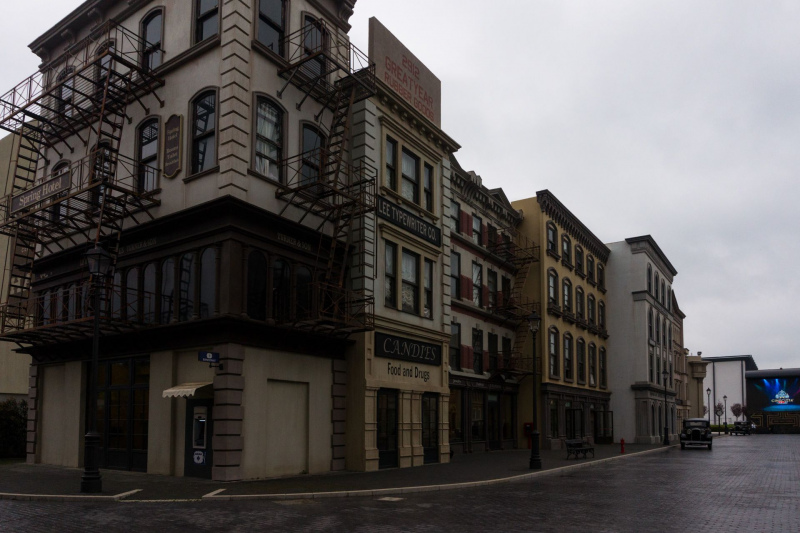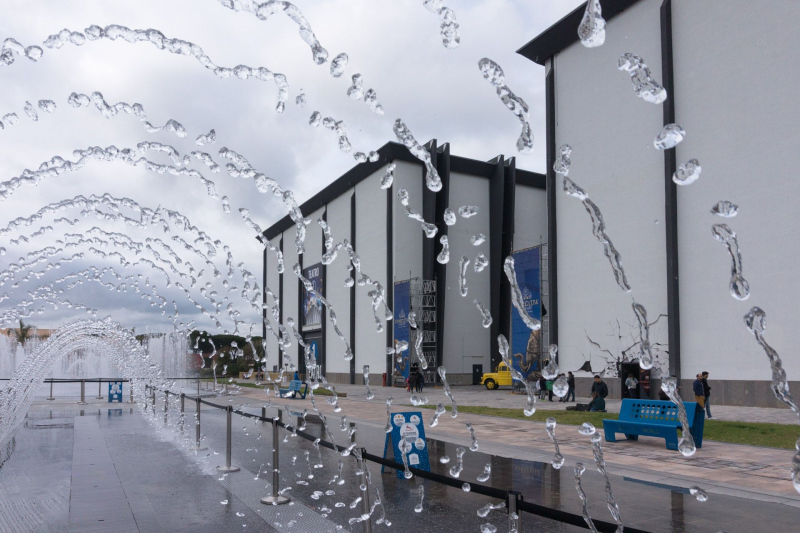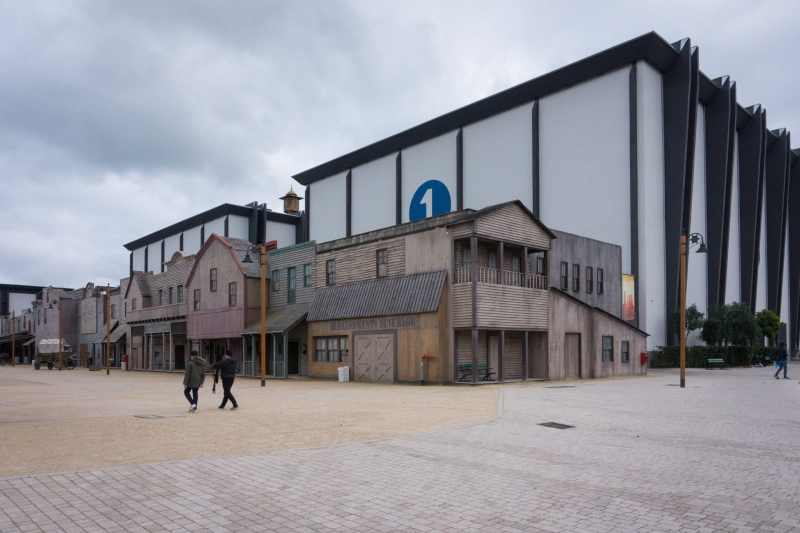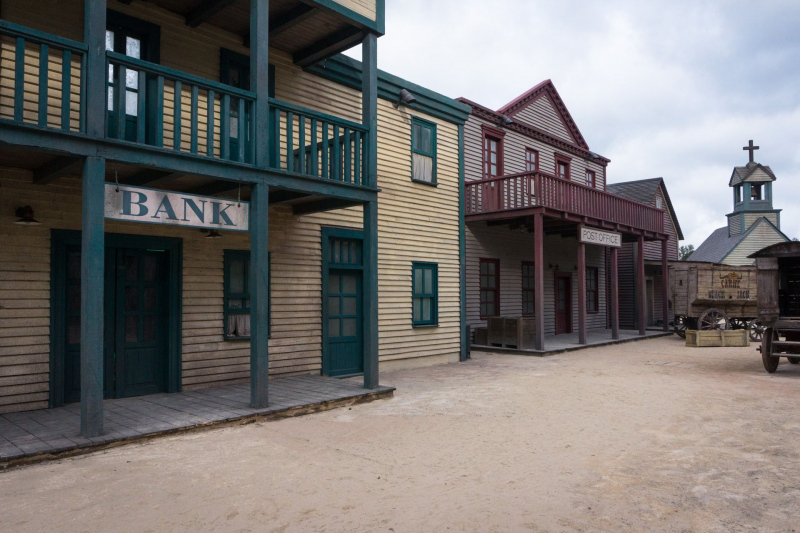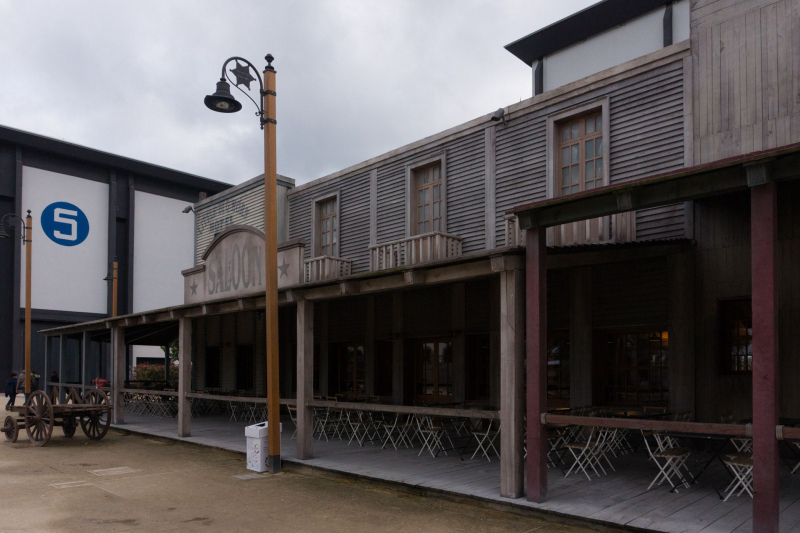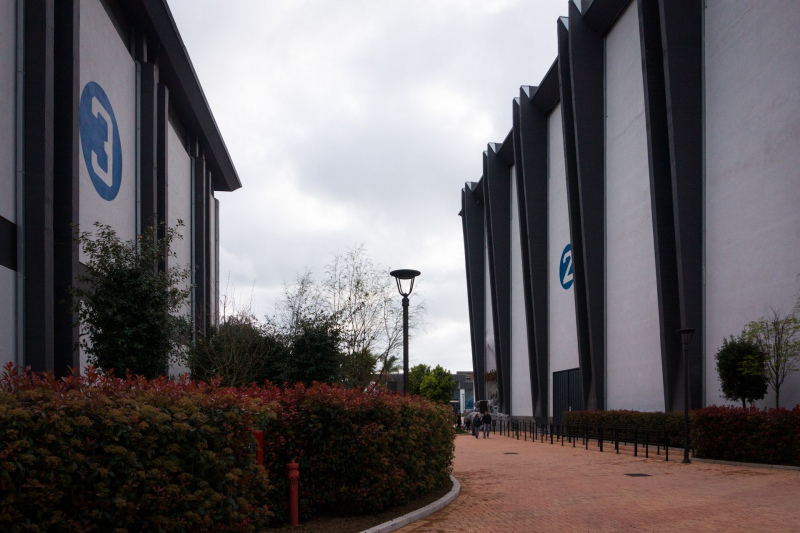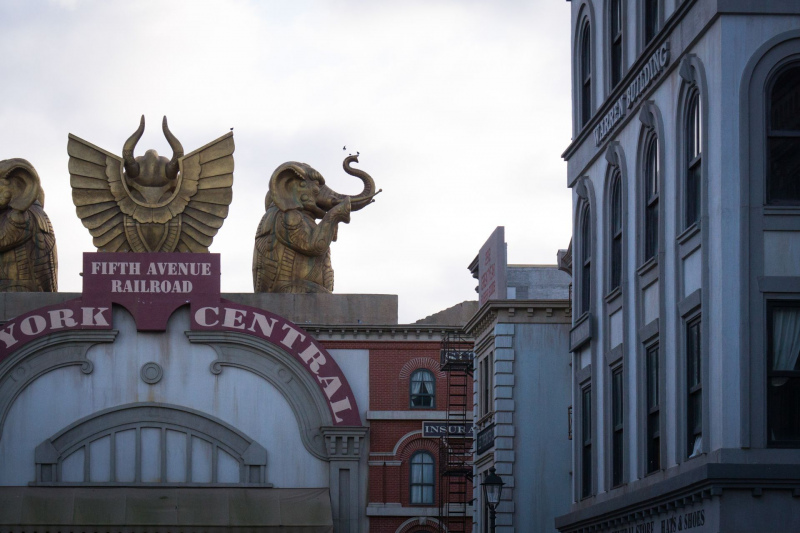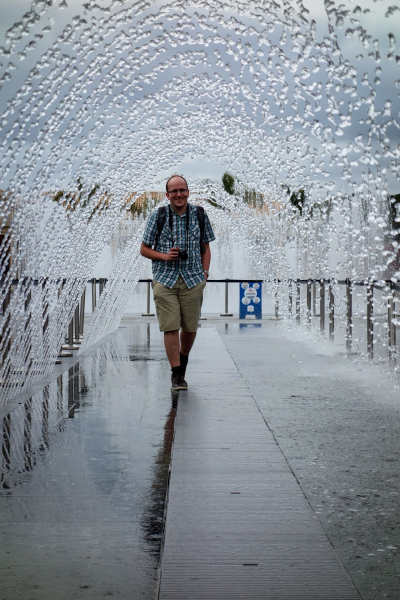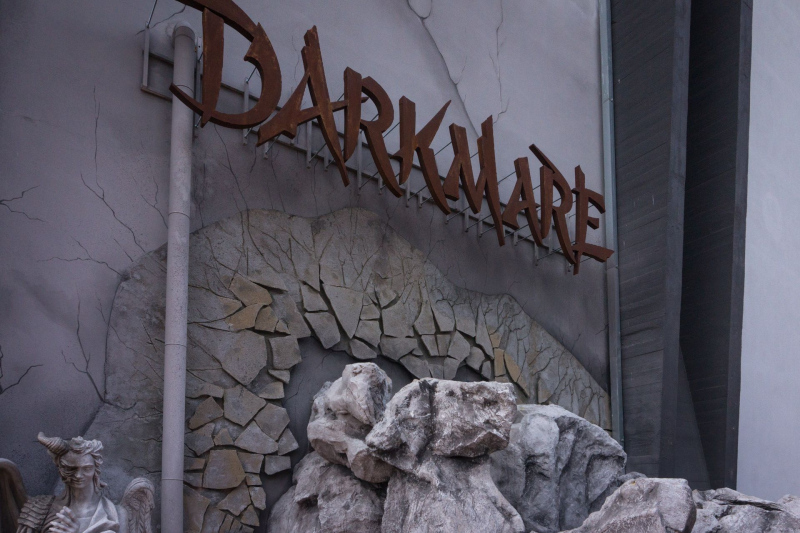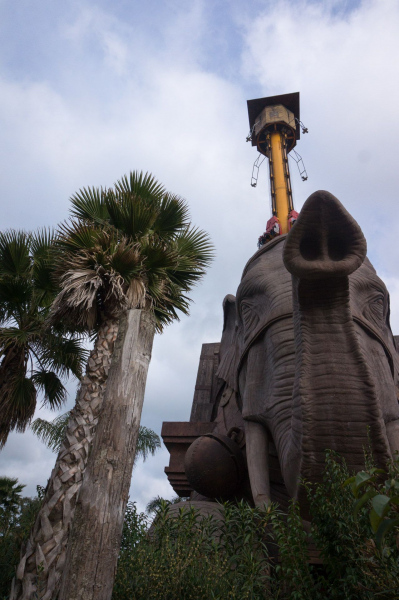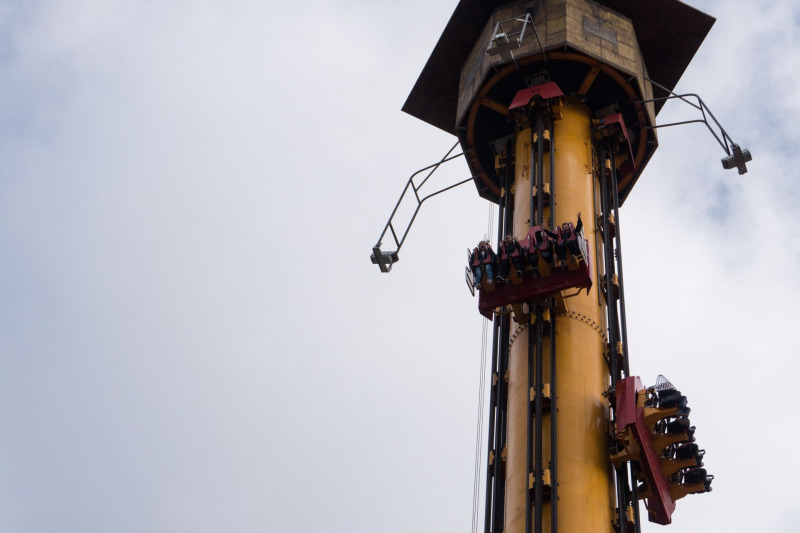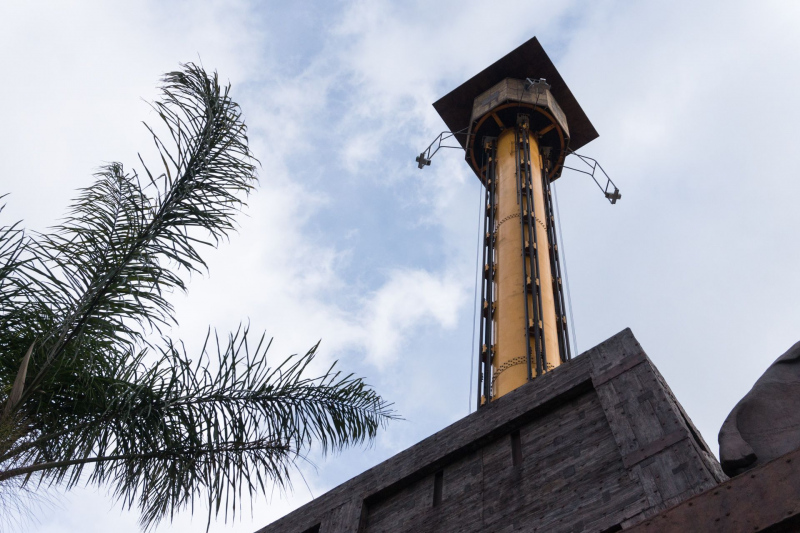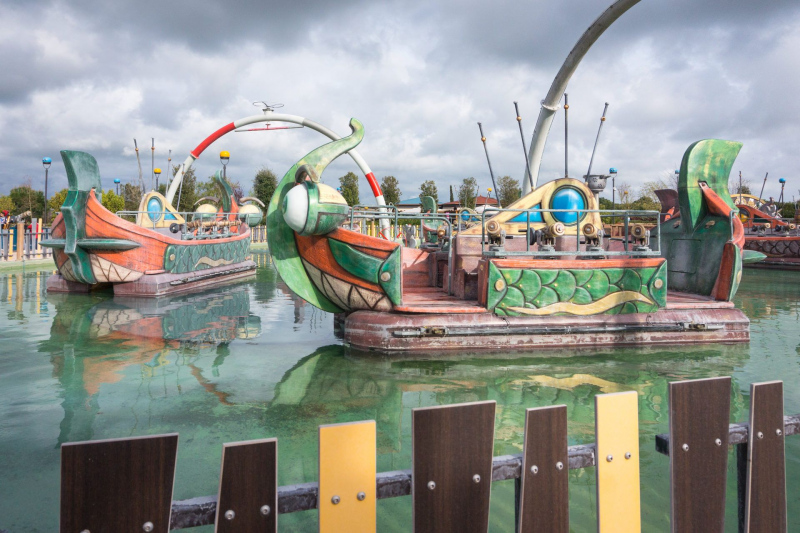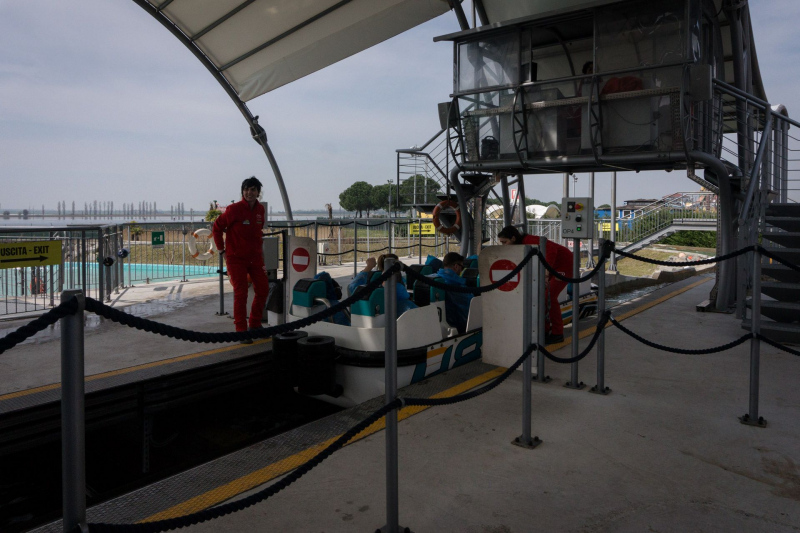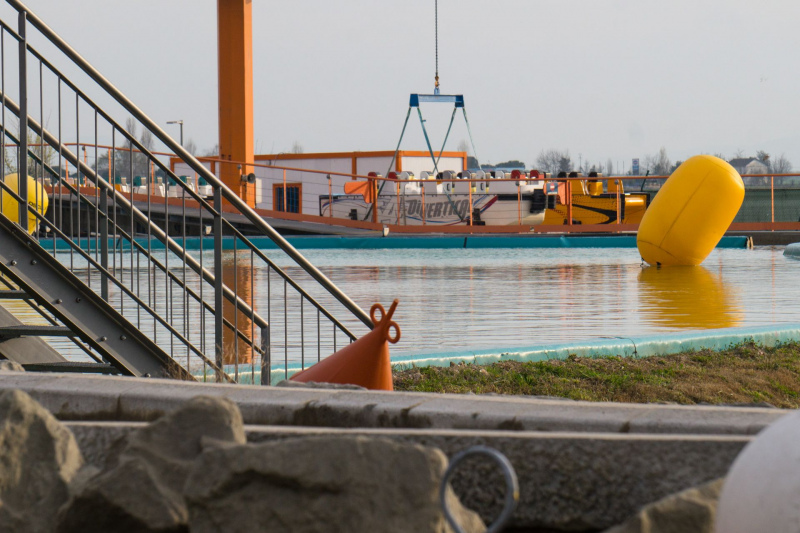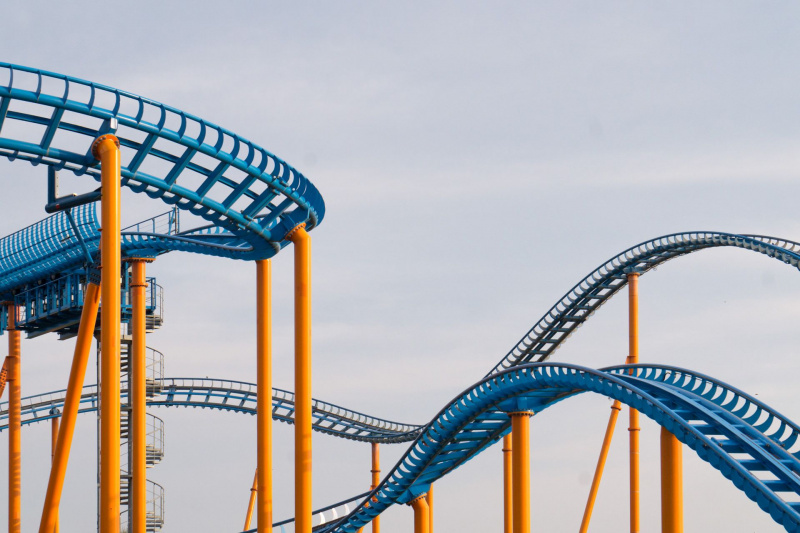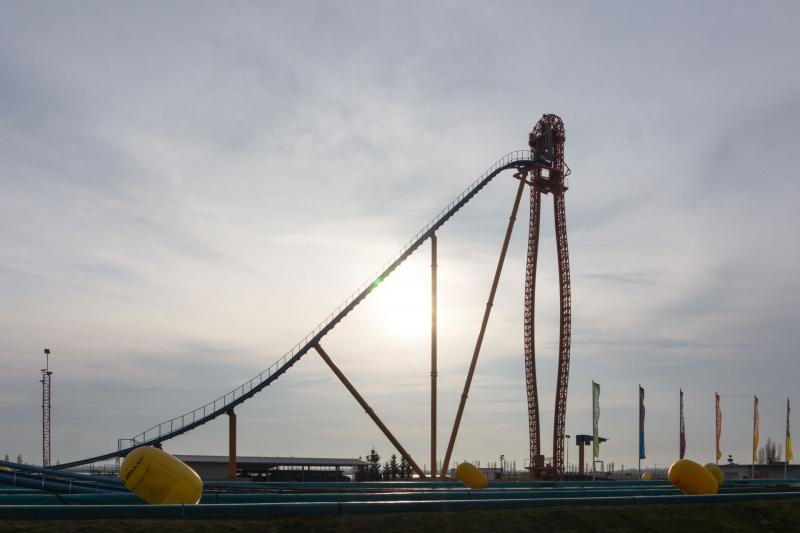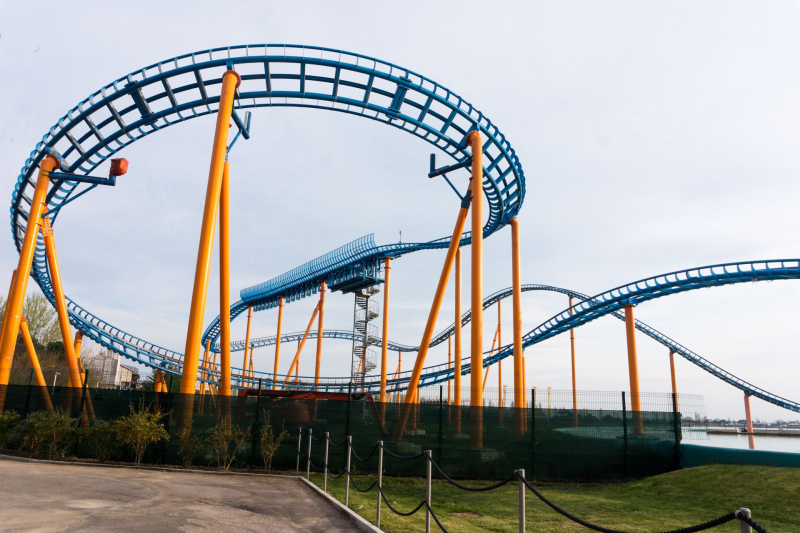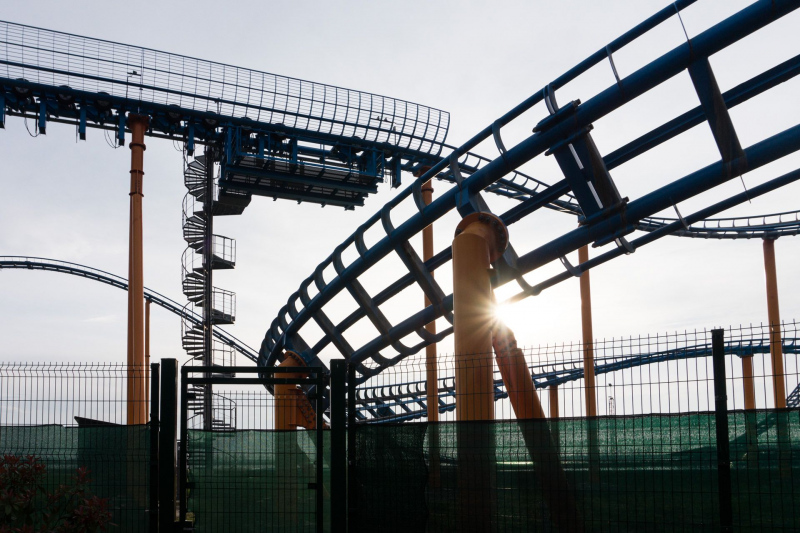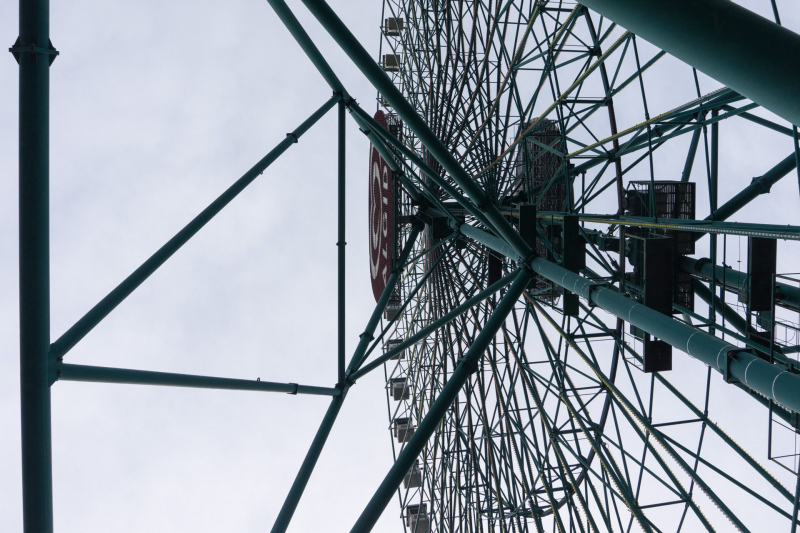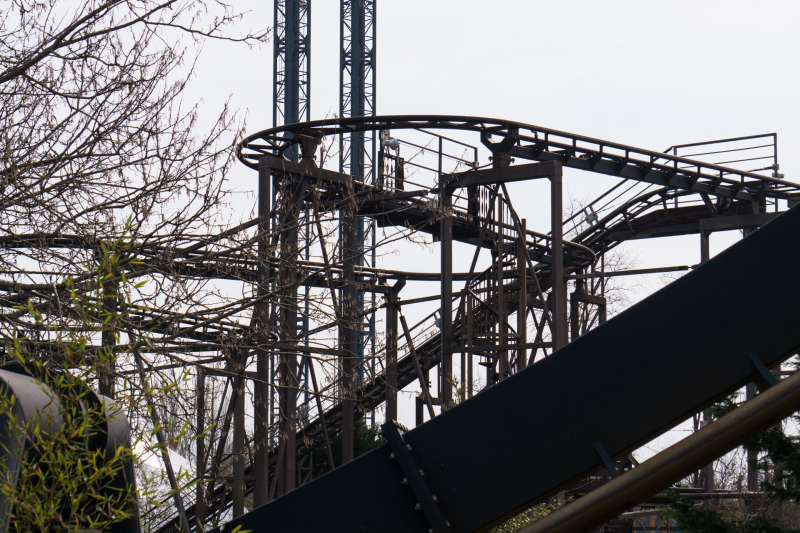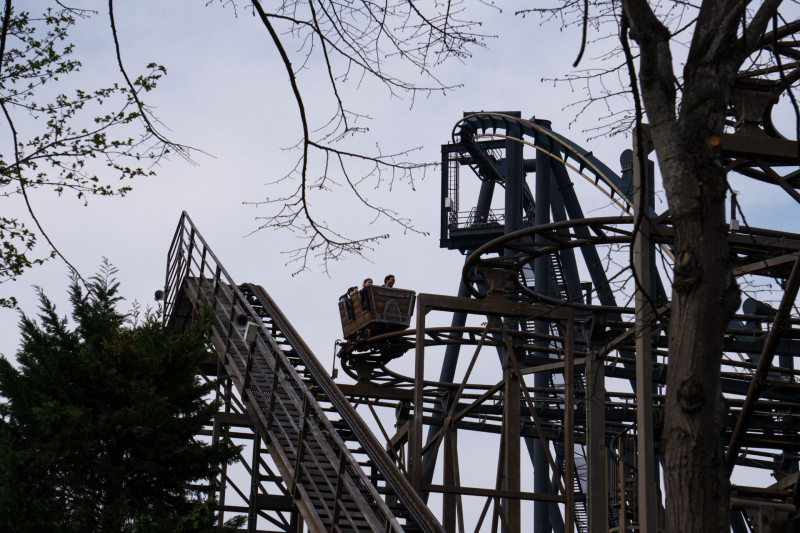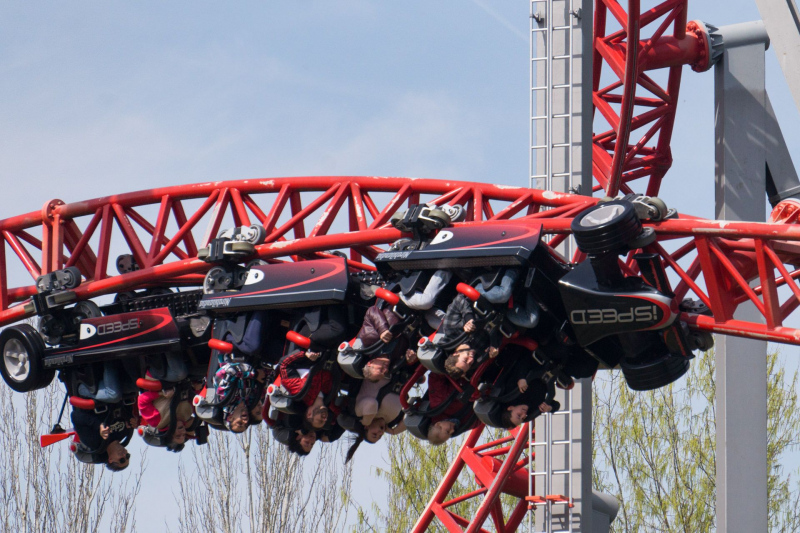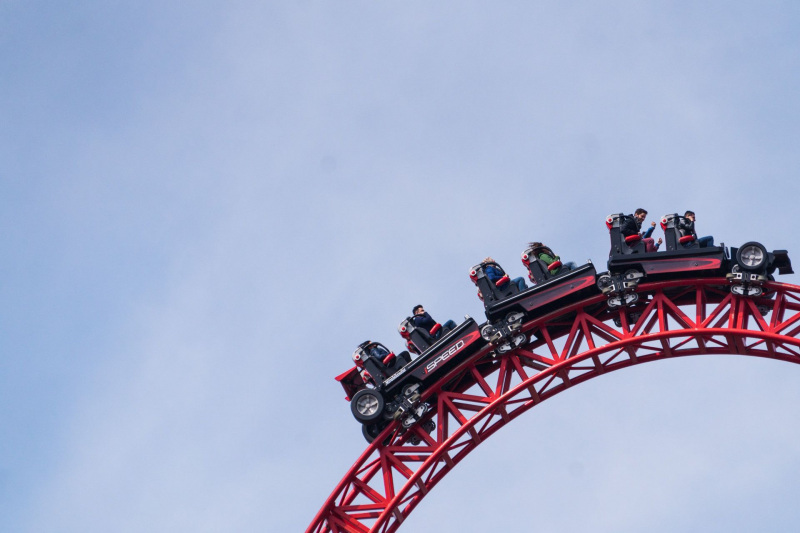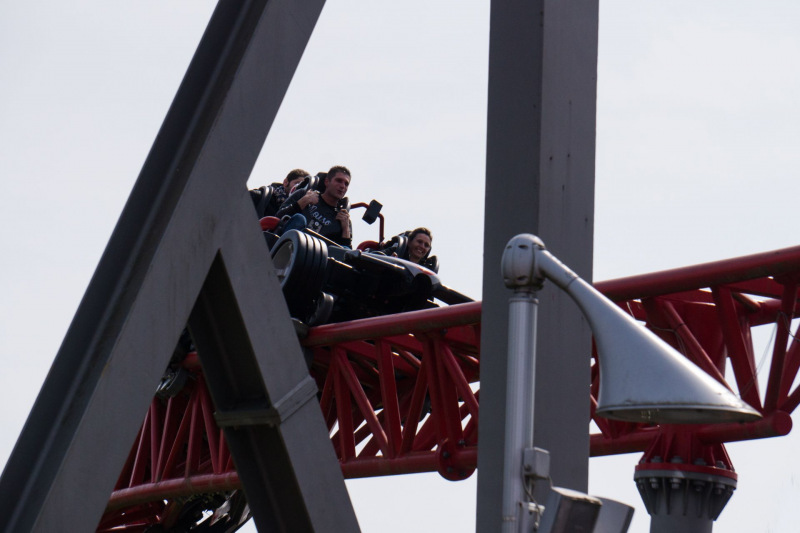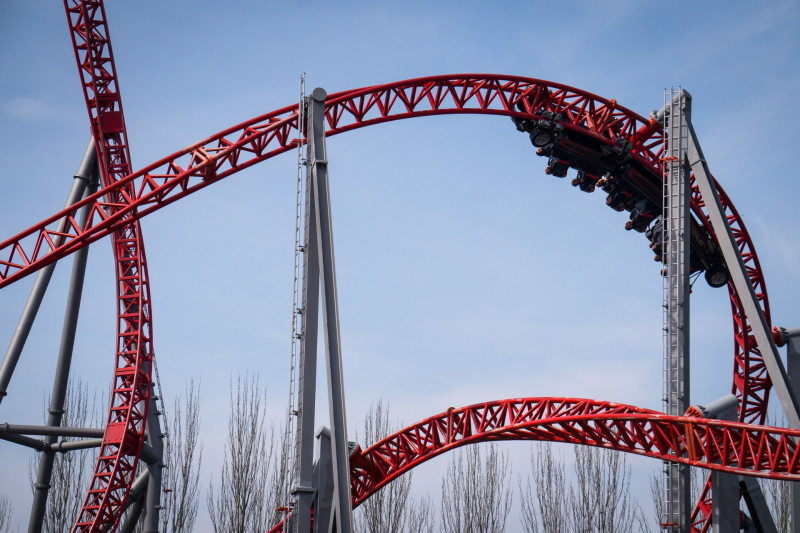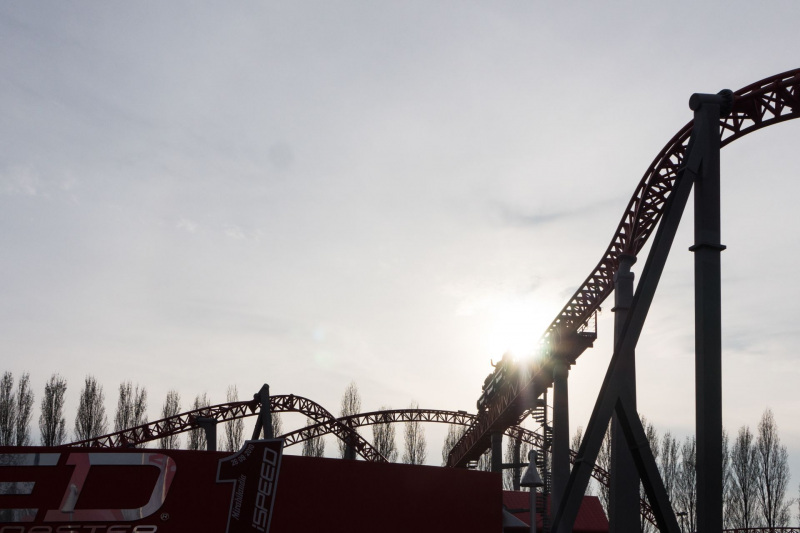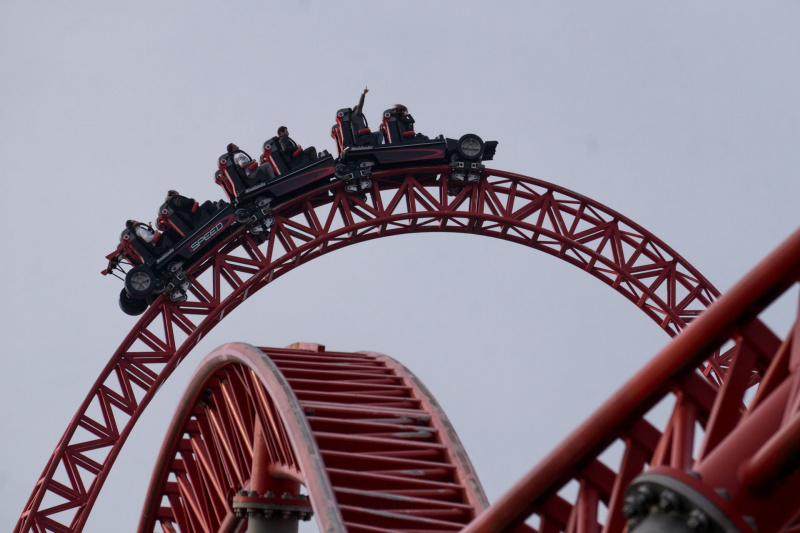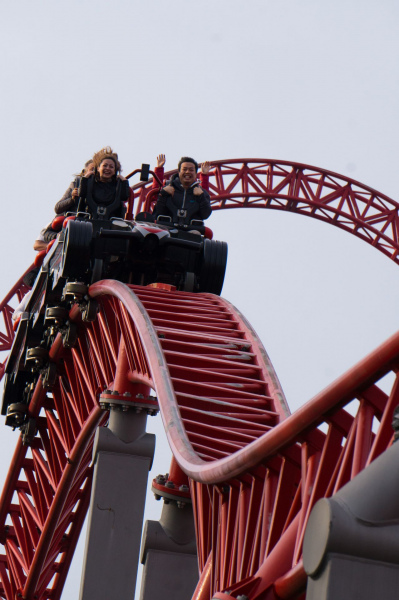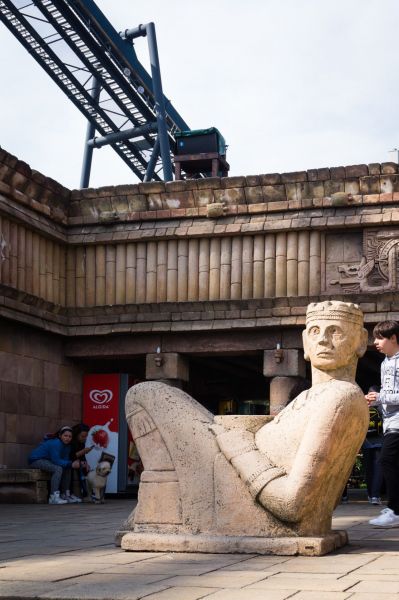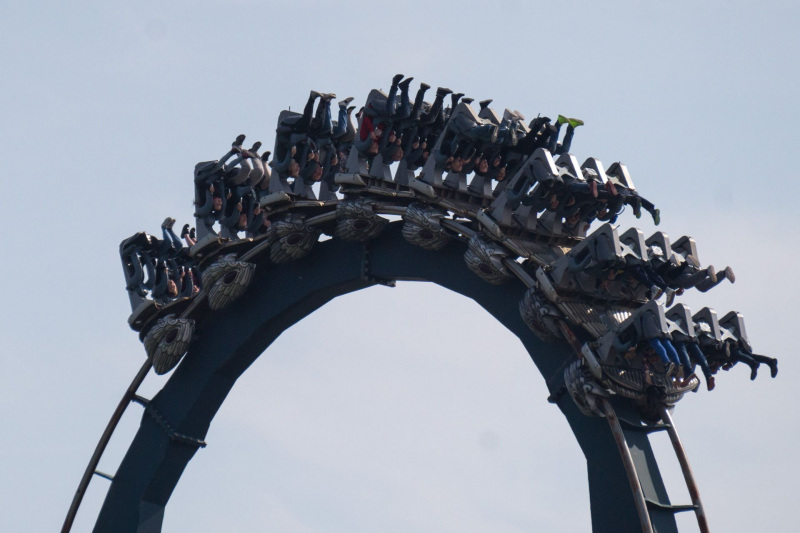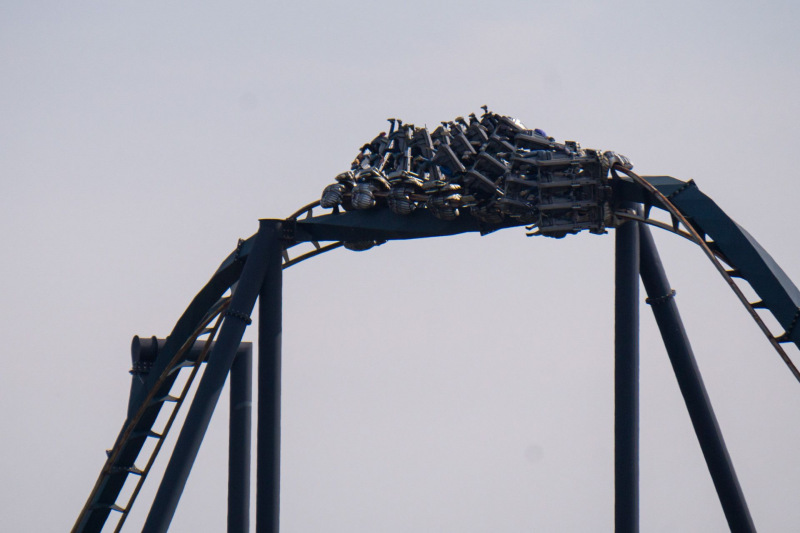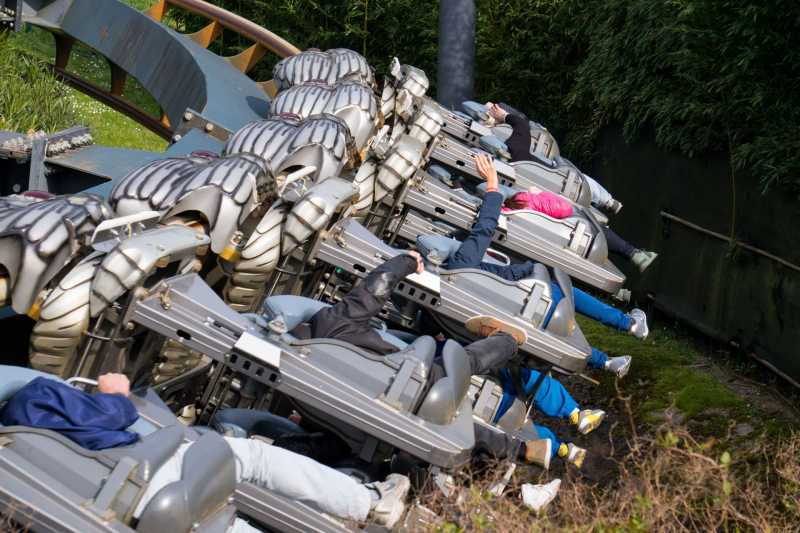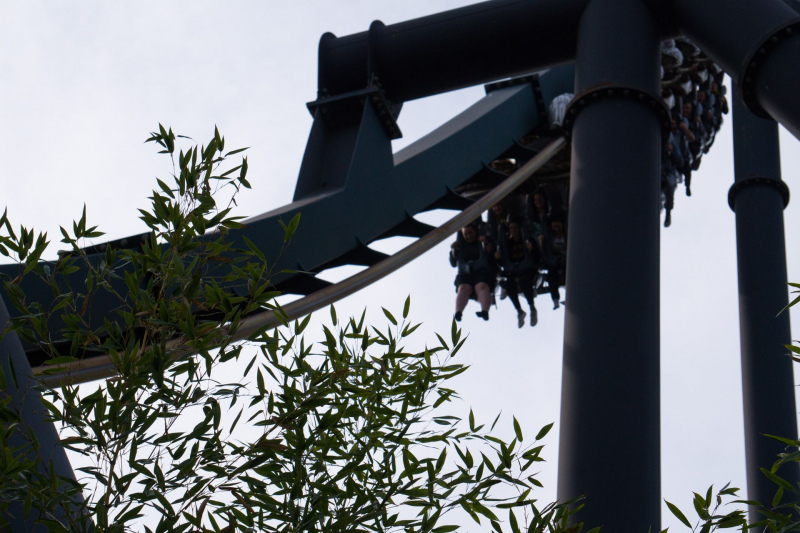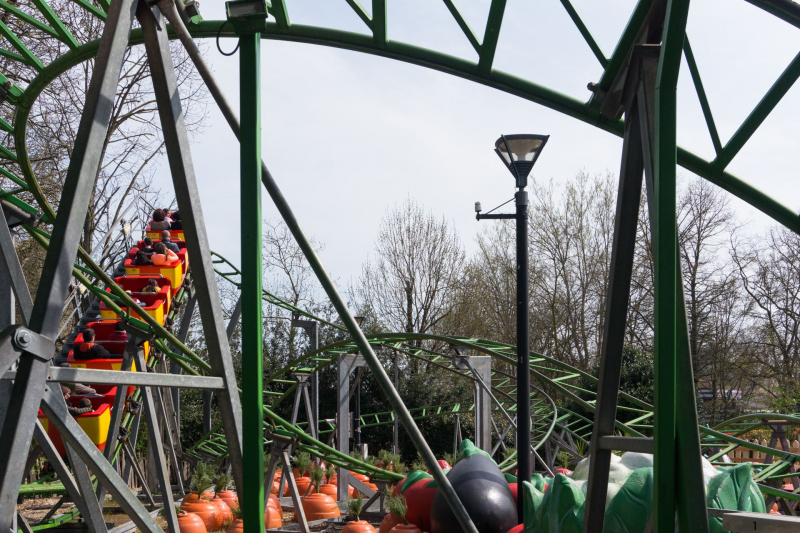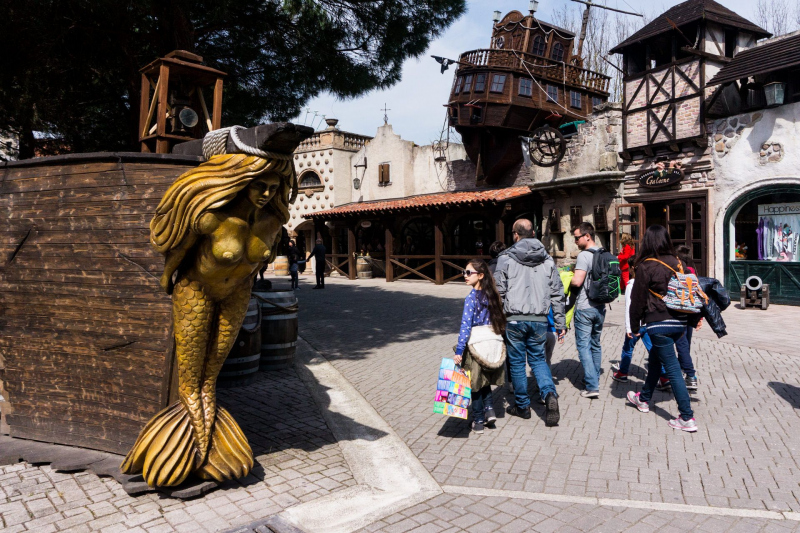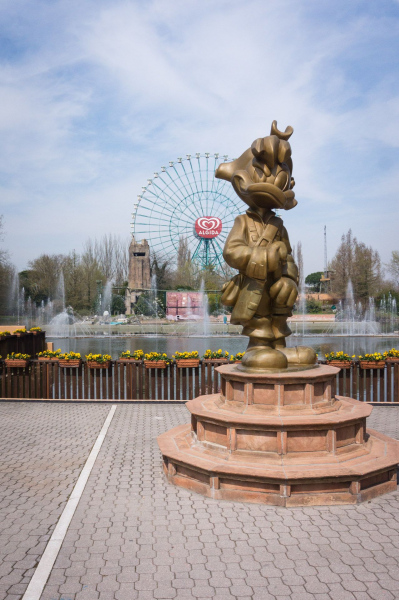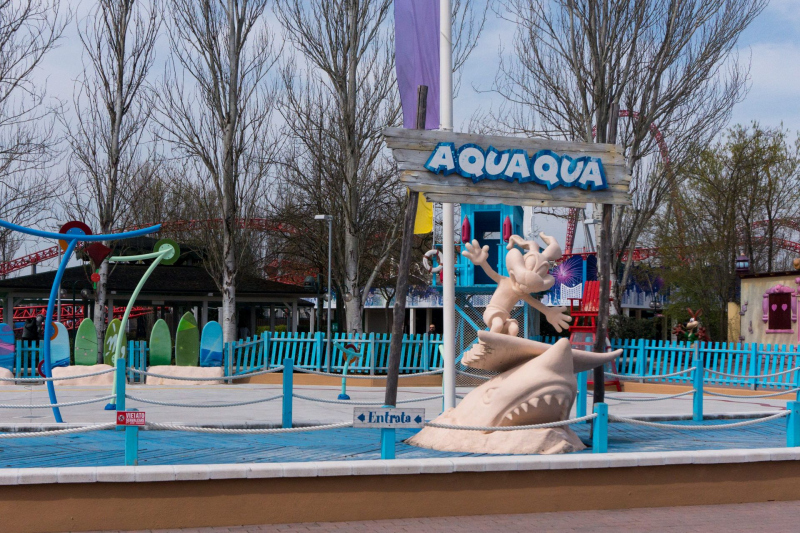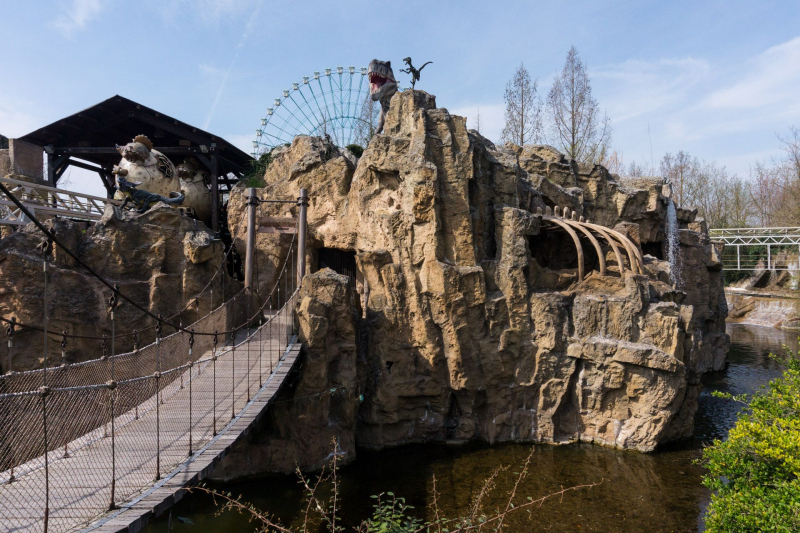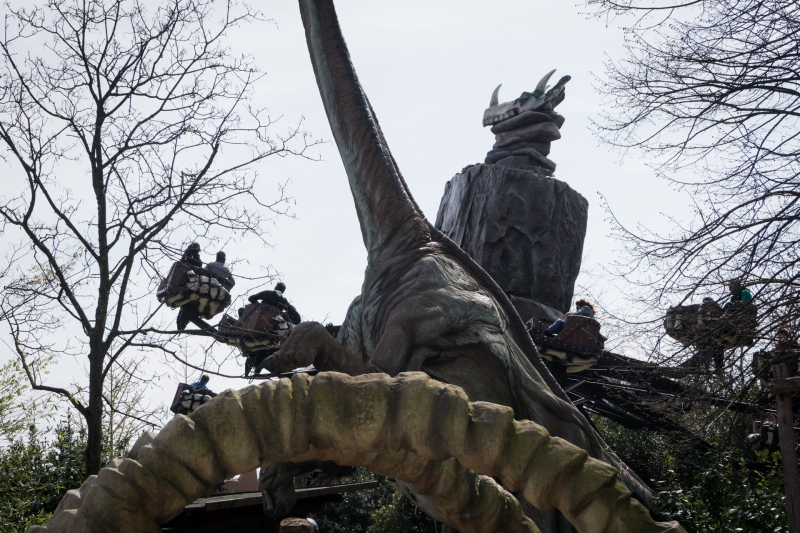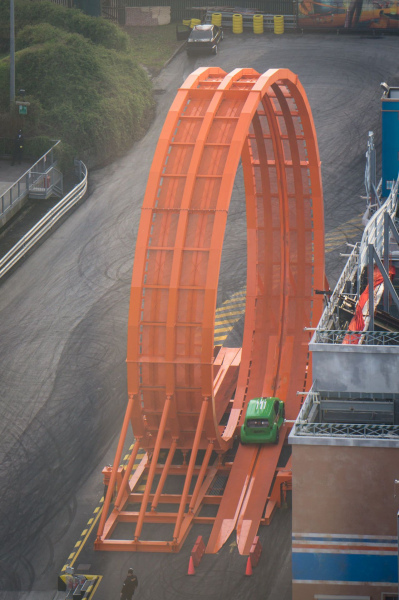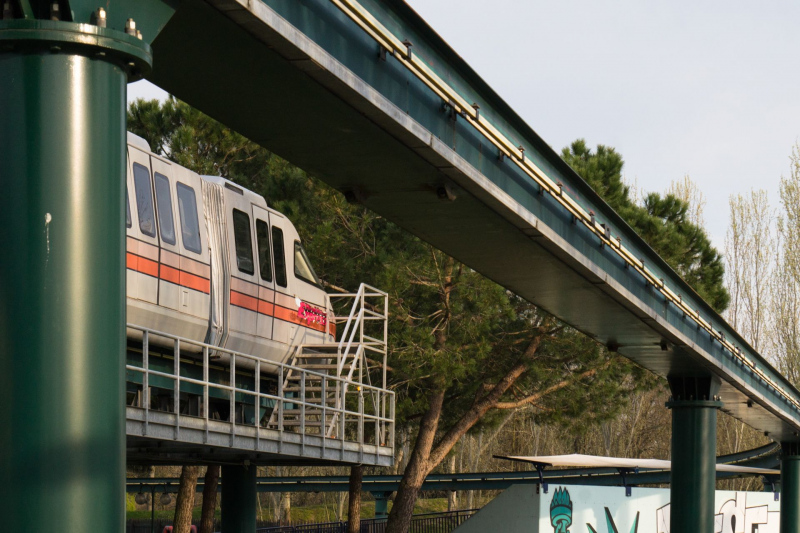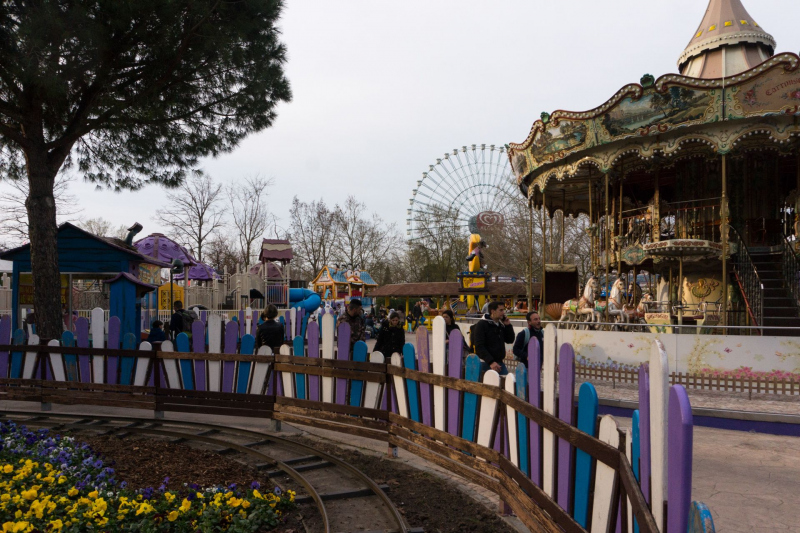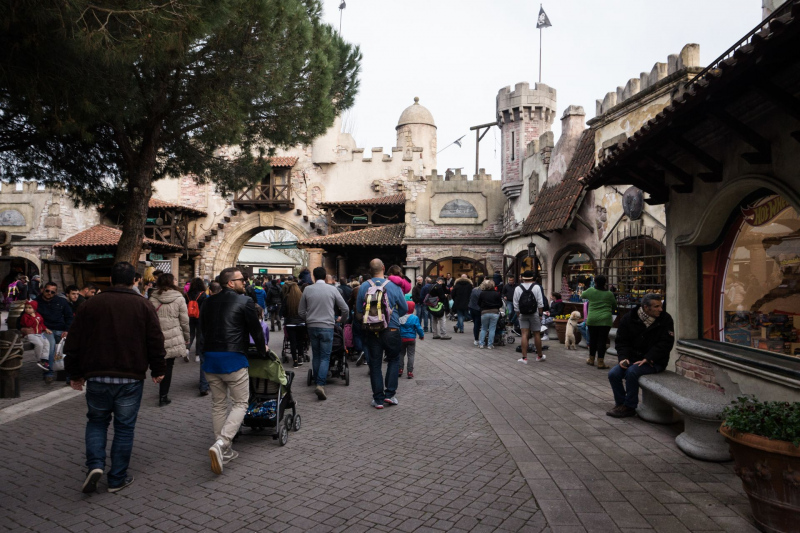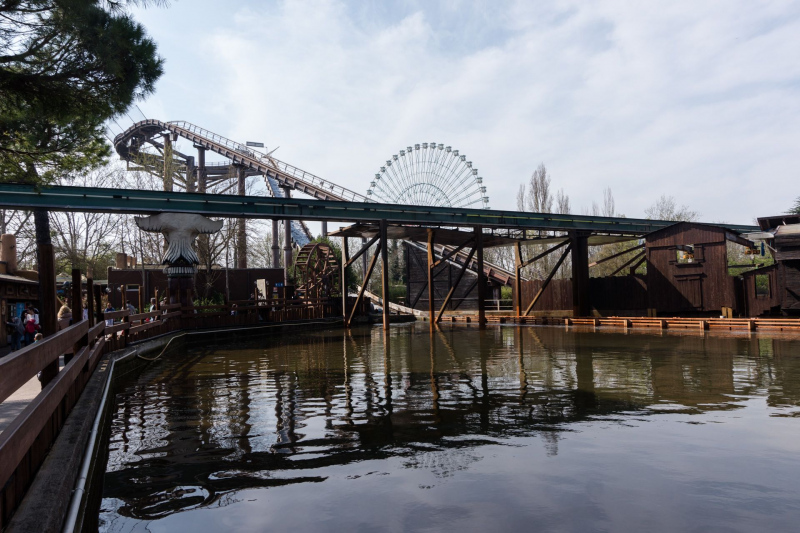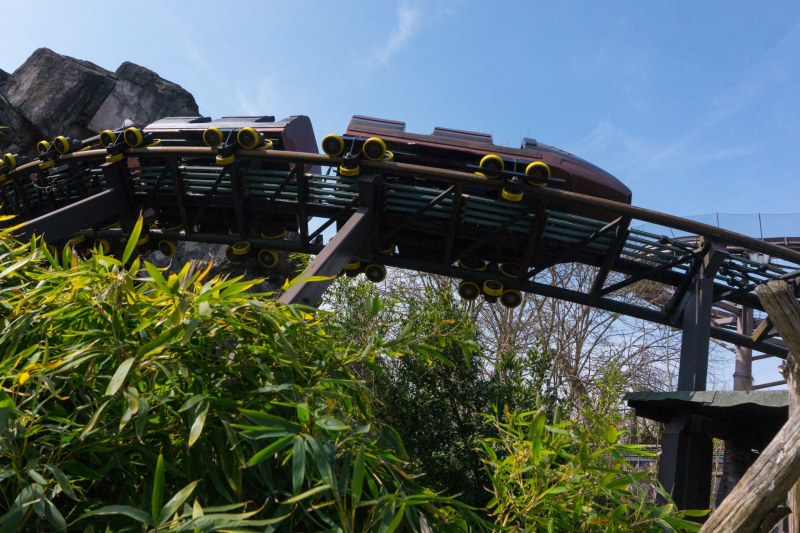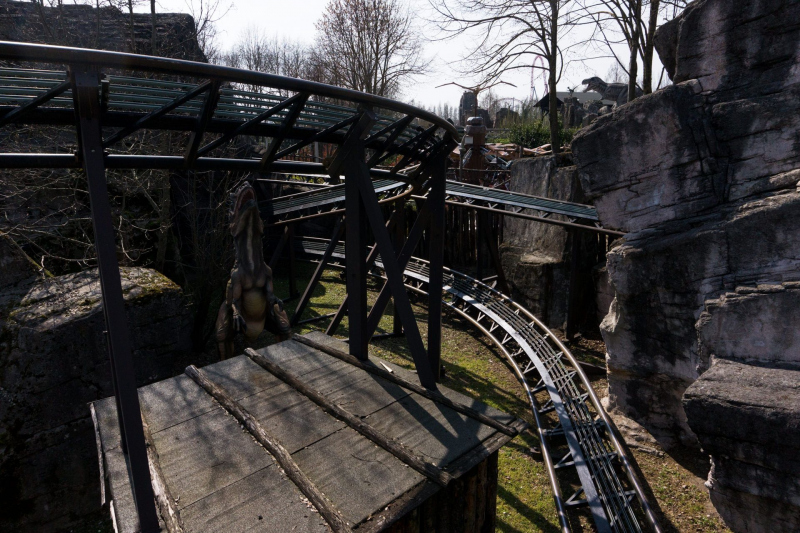Rainbow Magicland
The Rainbow Magicland is once again one of those theme parks designed on the drawing board, where the initially expected visitor numbers cannot be linked to reality and will probably never come together in the future. The operating company Alfa Park probably had similar experiences with Miragica, which opened two years earlier, so that some projects were probably saved from realisation. In 2011 the theme park, which is based on children’s series by the Italian animation studio Rainbow, opened and what looked very promising from the vastness of the Internet already turned out to be untenable by visitor reviews in the second year of operation of the park.
I don’t like to hide the fact that Rainbow Magicland lives up to its bad reputation; after all, we expected nothing less. As soon as we enter the car park, the previously consolidated picture is confirmed, as a large part of it has been taken over by nature in the meantime. But that doesn’t matter, because you can’t expect visitors here anyway, so without hesitation we went into the park to let the playful, meanwhile very run-down decoration take effect on us. While the Cinecittà World has been built with quality in mind right from the start and the park looks as if it had only opened yesterday, Rainbow Magicland looks like a fairytale park opened in 1970; only with the one, but very fundamental difference that in an old fairytale park there is often a very high level of attention to detail.
Shock
But what the park hardly lacks is an extensive range of rides and so we headed straight for the launch coaster Shock, built by Maurer. With its unparalleled forest of pillars and the very present location directly at the central lake of the Rainbow Magicland, the ride is an extraordinary eye-catcher, which in combination with the very impressive water spectacle forms a harmonious ensemble.
The trip begins with a short dip out of the station. This is followed by several ascents and descents in a slight serpentine movement, which are all interrupted by a short block brake section in between, probably simulating the darkride part of the ride. After having passed this unharmonious curve, the car falls down another slope and is accelerated in the following launch section. The car then goes over a hill in which it takes off quite well before it hits the ground for the first time from a lofty height. Very powerful and with a breakneck speed you cross the following valley. The main element of the ride is the non-inverted loop, where you shoot up a loop, but without standing upside down. On the top of the hill you experience another airtime moment of the very first order, just before the car bends to the left again and plunges into the depths. At the lowest point of the ride you experience once again an exemplary power play, which is soon topped by a brilliant steep curve. After a curvy ascent you reach a block brake and lose some energy, so that the next curvy shot is quite comfortable. In a light Bayernkurve a long corkscrew is introduced, where you are allowed to hang in the bar a little bit before the braking distance is reached.
Shock surprised! Especially in comparison with the other X-Car Coasters the ride is convincing all along the line. Here, the bar does not pull on the body unpleasantly during the ride and exceptionally allows a very free ride without the urge to leave the ride on the fastest way. The curve radii are also very wide, so that the massive car hardly feels the need to bump over the track. The strong forces and distinct airtime make this ride the best roller coaster of Rainbow Magicland and one of the better ones of the country.
Isola Volante
In the immediate vicinity, the Vekoma Sky Shuttle Isola Volante transports its passengers towards the sky, while the view of the park, car park and the nearby designer outlet Valmontone is not very exciting; however, the technology itself is worth experiencing, above all because of the easier implementation compared to the competing product.
Planeta Winx
Rainbow’s most famous children’s series is probably by far the Winx Club, which was primarily designed for little girls and even has its own magazine on the magazine shelves here in Germany. Although the Castello du Alfea, a large building complex with a 4D cinema, is dedicated to the series, halfway to the artificial castle is the dark ride Planeta Winx. Similar to the Disneyland classic Peter Pan, you fly through the series’ sceneries. The ride itself is nicely designed and from time to time you will meet the main actors of the series, who always introduce the scenes from their element.
Bombo
Directly opposite is the roller skater Bombo, part of the series Monster Allergy, a co-production with ZDF, which runs on the Kinderkanal and has no special drawing style; accordingly, the standard model from Vekoma fits in quite well. After a short bend and the following lift hill, you immediately take a steep bend with a subsequent upward helix to the left, complete a short valley and then go through a wide right bend near the station. Over a hill you cross the course of the track that has just been cleared, whereupon you descend a little in another helix. A left turn follows, whereupon the braking section is waiting for you. After one lap the ride is already over. Despite the modern train, the driving characteristics are not the best.
Maison Houdini
If you follow the tour, after a few metres you will come across the Maison Houdini, a modern witches’ swing from Vekoma, which, for whatever reason, was built underground. The main building, as it appears, contains only the preshows of the ride and the lift that takes passengers downstairs. A few meters further on, there is a second building in a similar style, which contains the lift, which transports the passengers back up. In between there is a square with skylights and ventilation shafts, under which the actual ride is located. Since the ride opened quite late we could not test the Mad House; the idea of the underground attraction is great, but the implementation is space consuming and probably also quite cost-intensive, the gained space also defies any logic and aesthetics.
Amerigo
Adjacent to this is the children’s area of Rainbow Magicland, which belongs to the second type of modern children’s paradise in amusement parks. Compared to the nicely designed areas in Gardaland or Port Aventura, everything here stands quite naked on a concrete slab. In doing so, an attractive overall design as well as any vegetation was avoided. Unfortunately, the local Big Apple Amerigo was not supposed to open until late afternoon, so that we had to do without a ride in order not to throw the rest of the day overboard. I don’t really know why this simple children’s roller coaster is the only ride in the park that opens so late.
Mystika
Past the Battaglia Navale, the nicely designed Splash Battle by Preston & Barbieri we went to the freefall tower Mystika by SBF Visa. This Italian manufacturer is known for its toddler roller coasters and lots of junk, which is mostly ordered by park managers without any experience; the best example is the Ankapark (Wonderland Eurasia) currently under construction near the Turkish capital Ankara. Also in Rainbow Magicland they probably wanted to offer a big freefall tower, but at the same moment it was not allowed to cost anything. Otherwise the tower with a total height of 70m, of which at least 50m already serve as braking distance, cannot be explained. The drop itself is bad, in addition there is a very unpleasant restraint system installed.
Cagliostro
With the right seat you have at least a view of the two neighbouring roller coasters, whereby the entrance to the spinning coaster Cagliostro is closer. Admittedly, you can’t see much from the spinning coaster outside the abstractly designed hall. Inside, too, you’re really only looking at darkness, although all efforts in this respect were ruined by the outside turn.
After the lift hill and the already mentioned detour out into the daylight there is a steep curve towards the hall floor after a gently descending straight section. Hereupon the car shoots up an Immelmann turn, whereupon the following valley and the ascent to the block brake is made in a wonderfully sweeping S-curve. After the block area, however, not much happens. Over wide curves you cross the whole hall and then approach the ground. In pure zigzag manner a straight section is taken, whereupon you are again at the front end of the hall. After another short curve you reach the second and larger lift hill of the ride, which brings you back to the station level.
Cagliostro is a nice spinning coaster, at least in the first part of the ride, but then it loses all inspiration and comes crawling towards the end of the ride like no other coaster of this type. Probably a more elaborate design with larger scenes was intended here, because there is still enough space in the hall, but without all this the ride with this layout is quite senseless and not very exciting.
Huntik 5D
Right next to the Gran Teatro, where the musical Romeo & Juliet by Gérard Presgurvic is shown in a 35-minute performance, is the dark ride Huntik 5D, based on the series of the same name. As seekers, we join the team around Dante, Lok, Sophie and Zhalia to fight against the organisation. For this we use guns to shoot our way through elaborately designed scenes with successful animatronics and well embedded screens through hordes of titans. What is confusing, however, is that our team also uses titans and these appear on the screens at the end. If you are not familiar with this series, this is rather unnecessary, as it spoils the otherwise perfect impression. The series reference is very well done, but you don’t have to know the series to enjoy this great shooting darkride from Alterface. Huntik is definitely the best ride of the Rainbow Magicland and one of the best dark rides of this kind in Europe.
Yucatan and Le Rapide
At least from the outer facade, the Spillwater Yucatan presents itself to its passengers on an equal level. With its two shots, the water ride is one of the driest rides of its kind in Europe; however, there is something for the eyes, especially during the second turn. If you want to get wet, however, you are in good hands at the neighbouring Rapid River Le Rapide. Here too, the design is impressive, which is why the ride is one of the best of its kind in Europe.
L’Olandese Volante
The last remaining roller coaster is the L’Olandese Volante, i.e. the Flying Dutchman; appropriately built by the Dutch roller coaster specialists Vekoma. The ghost ship flies noticeably and now even with VR glasses over the track of the standard model based on the prototype Calamity Mine of the Belgian amusement park Walibi Belgium.
The ride begins with a right turn and the following lift hill, which unfortunately takes you up in a very straight line, just like in Gardaland; nothing remains of the accentuated cross slopes of the original in this version. At the top, the train immediately throws itself into a left helix and alternately into three 180° curves before reaching the first intermediate brake and the second lift hill. This hill is also passed just as trivially as the first one. At the highest point of the track you cross a short hill and immediately approach the ground again in a wide right helix. In a left-hand helix you build up again in metres of altitude before you take it down again in another downhill helix. After a further left turn, you immediately reach the braking distance and shortly after that the station.
When Rainbow Magicland and Vekoma were looking for a way to square the circle on this ride, they succeeded. There is simply no other way to explain this bumpiness – unusual even for the manufacturer – which the train reproduces to its passengers over the entire track length. Well, even Mammut in Gardaland was not really smooth, but L’Olandese Volante simply tops everything in this respect. I have rarely ridden such an unpleasant roller coaster, which is why I really have to advise against a ride on this coaster.
Pictures Rainbow Magicland
Conclusion Rainbow Magicland
The Rainbow Magicland blinds like no other park with its opulent, but already quite disintegrating facades, but it can also show some rays of hope. Apart from the dark ride Huntik 5D and the roller coaster Shock, Rainbow Magicland lacks some highlights that encourage you to take more than one ride. With the extremely ugly children’s land and the Big Apple, which was closed until late afternoon, the park also offered a low light par excellence. It is no wonder that the park is the way it is.
What are your thoughts about the theme park Rainbow Magicland? Just write it here below the report in the comment field or visit our social media channels:
Click here for the next report of the Il Viaggio dei due Runner Tour

